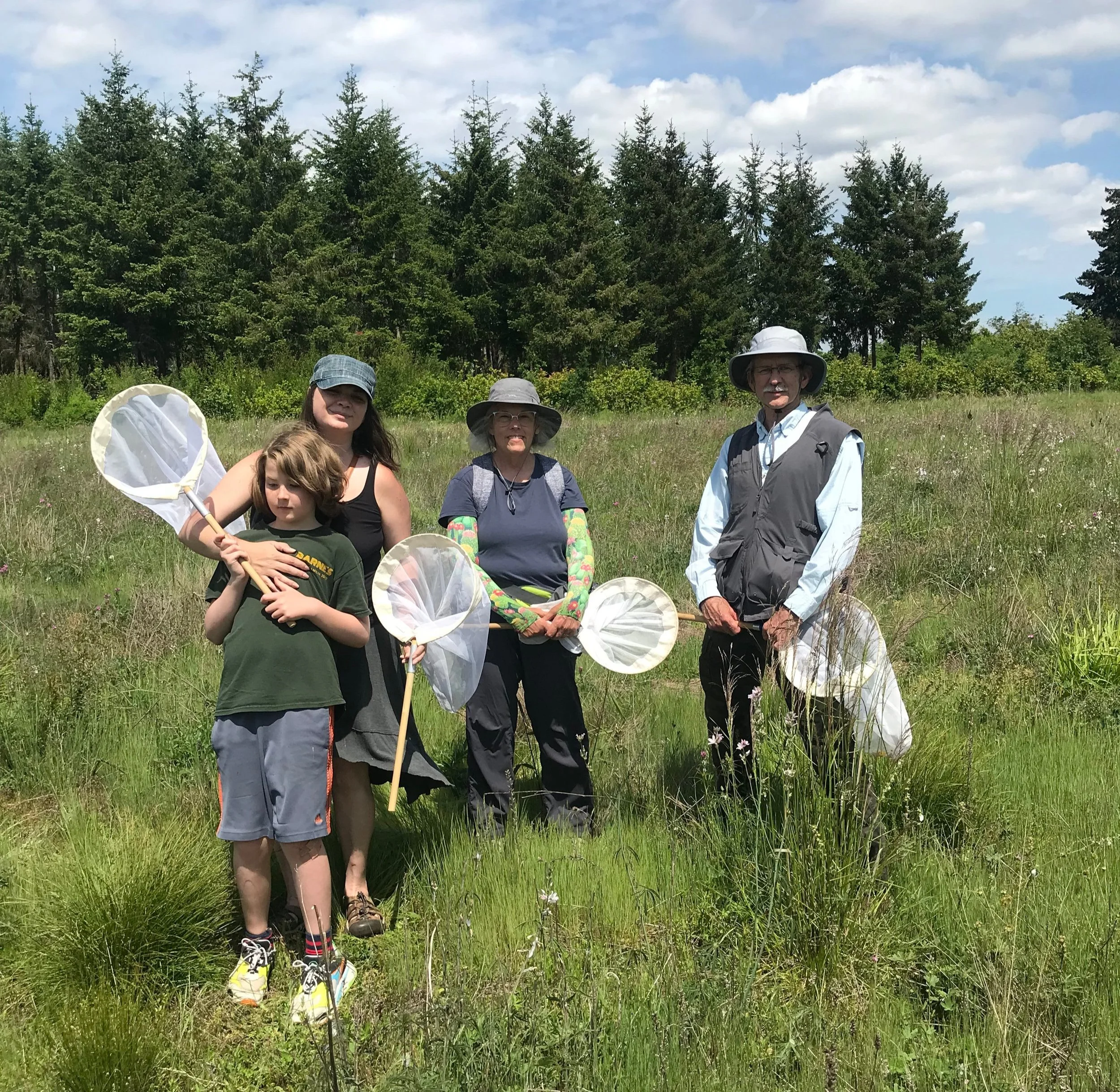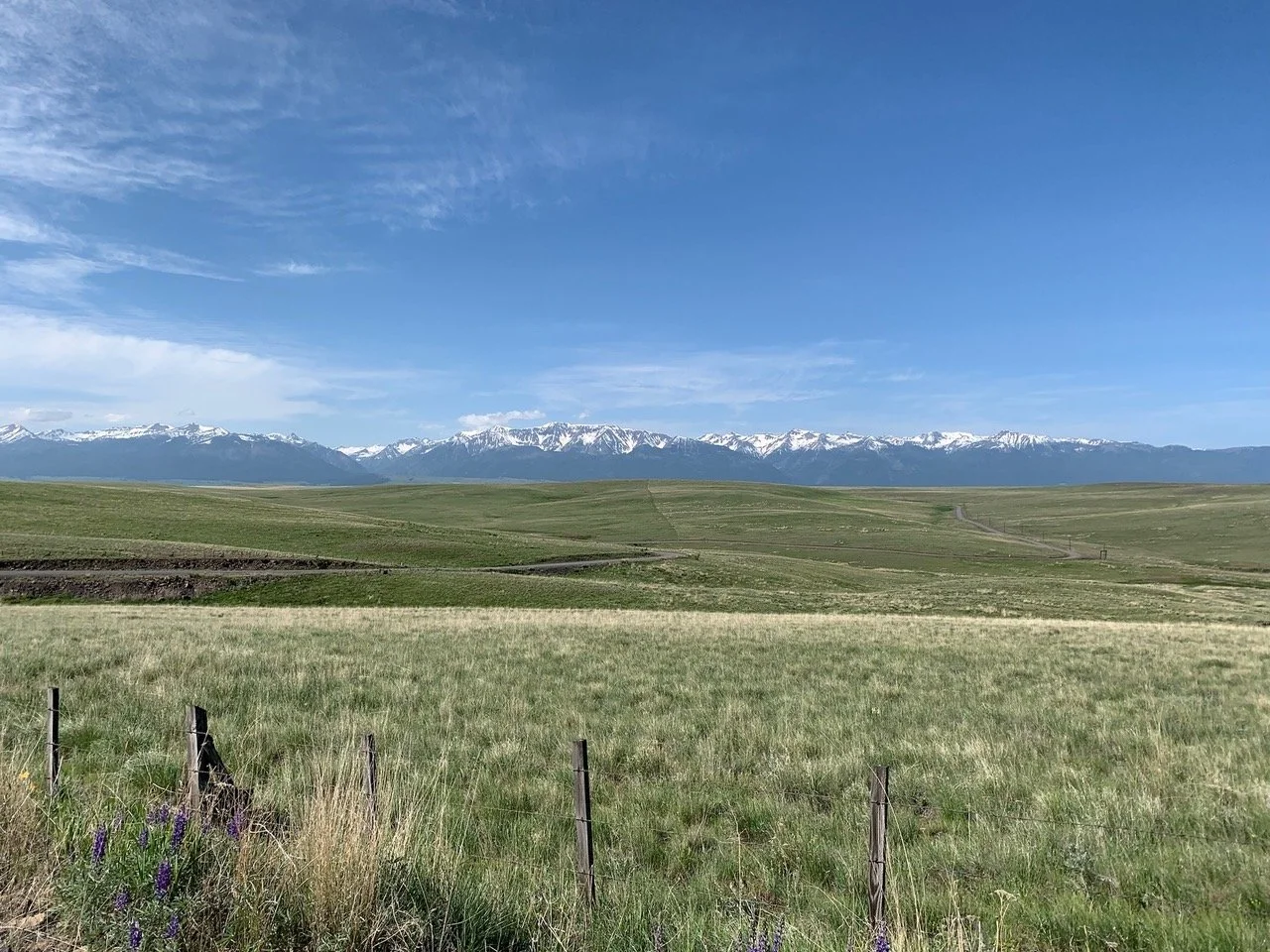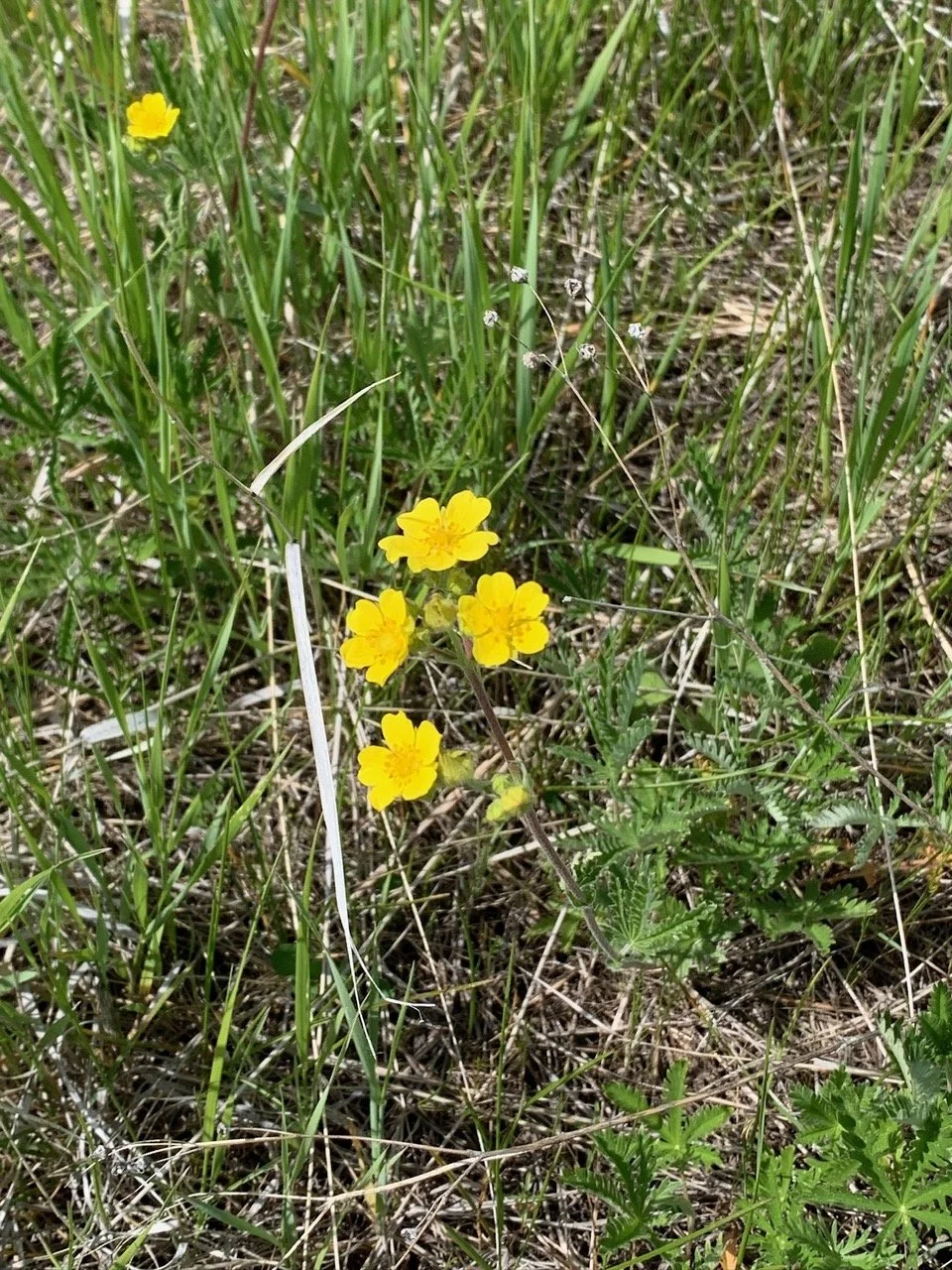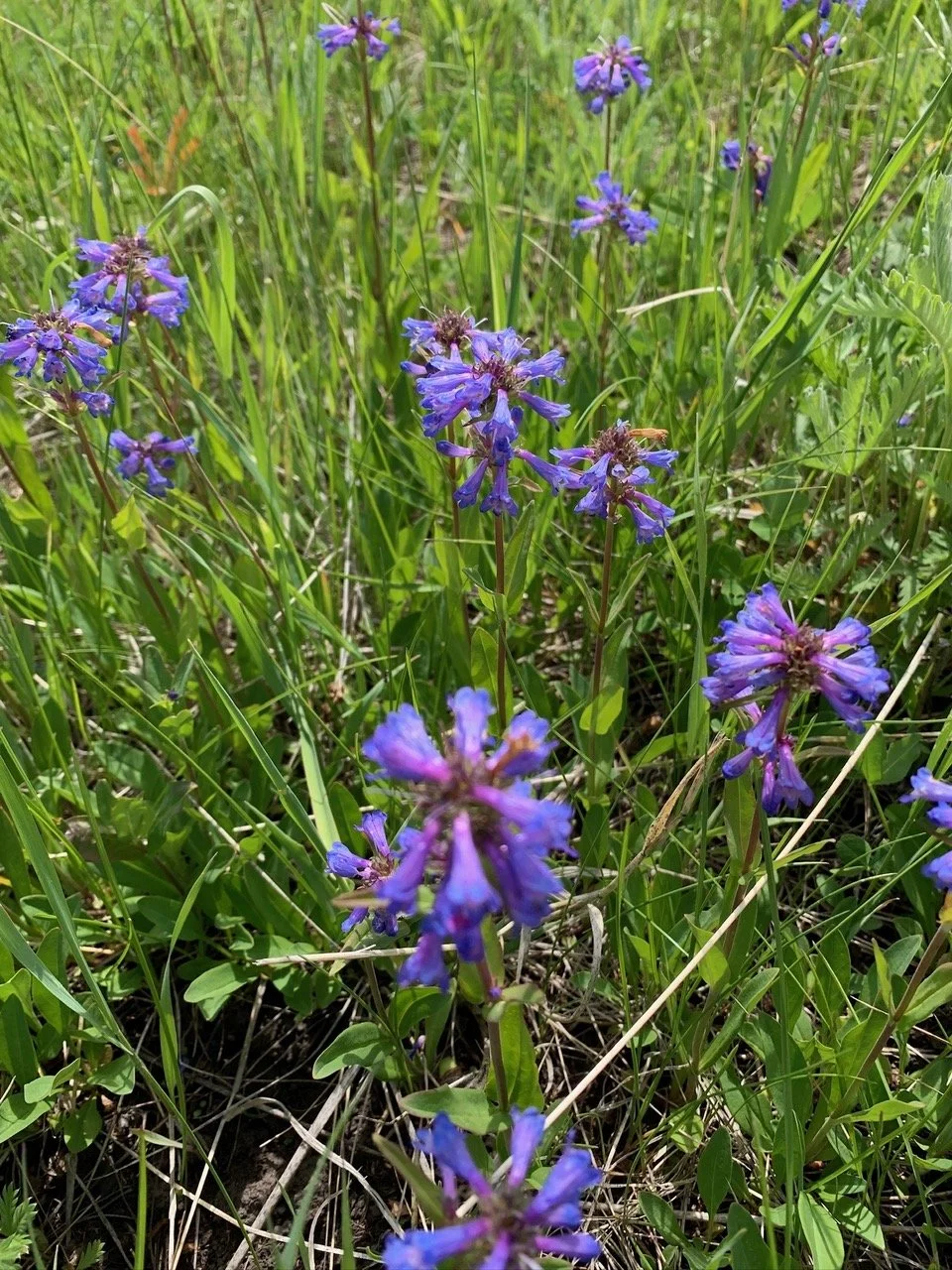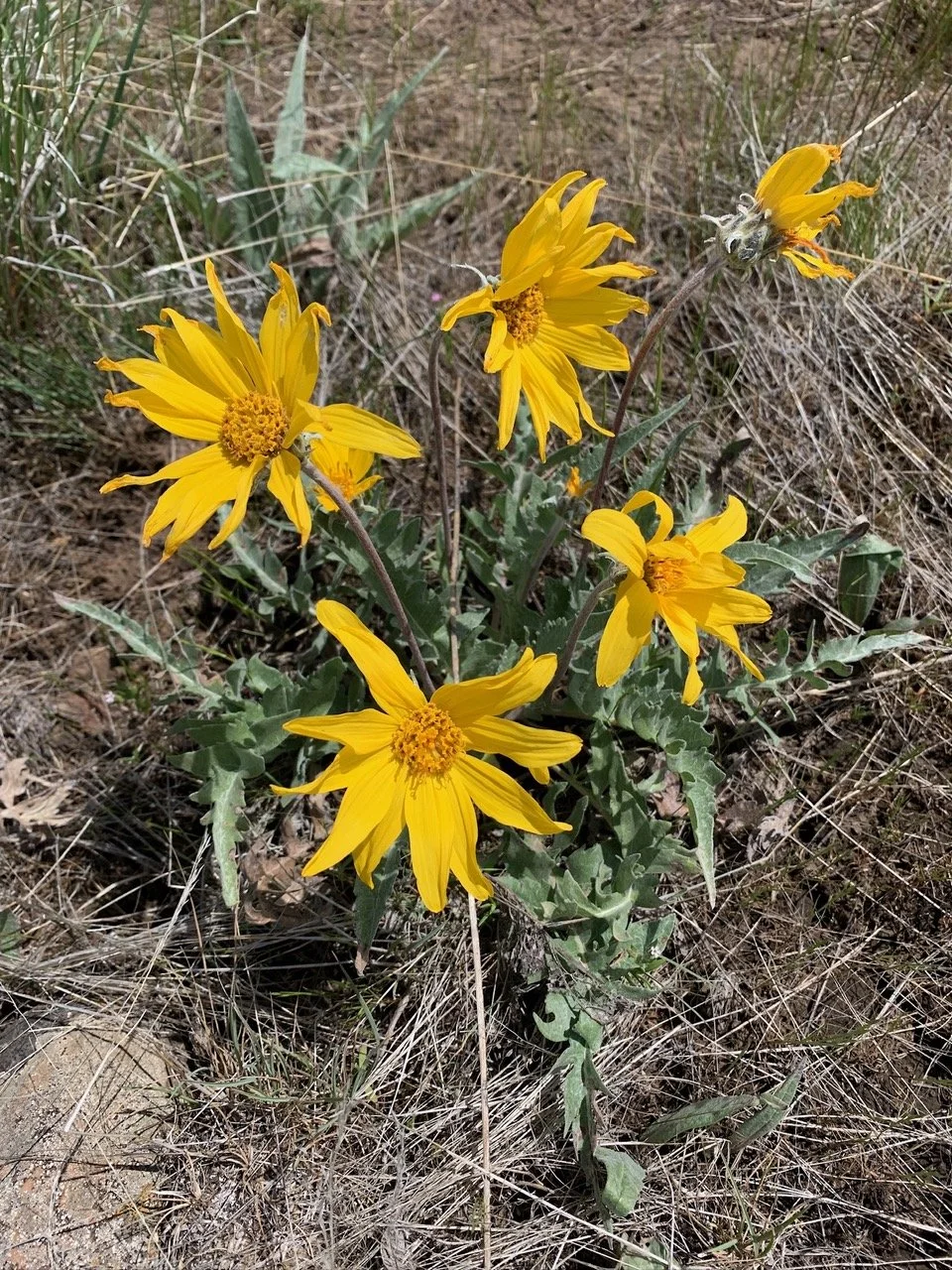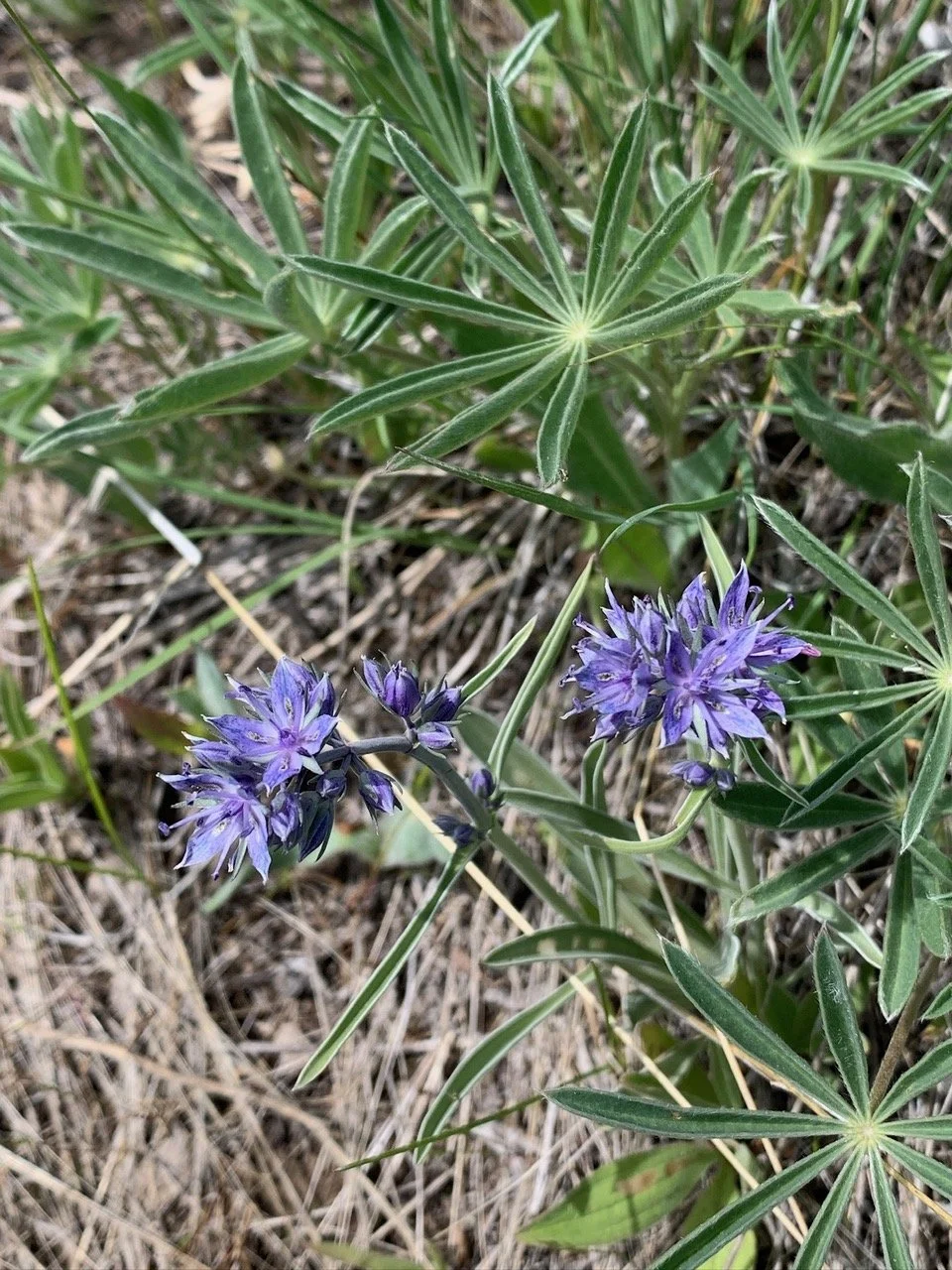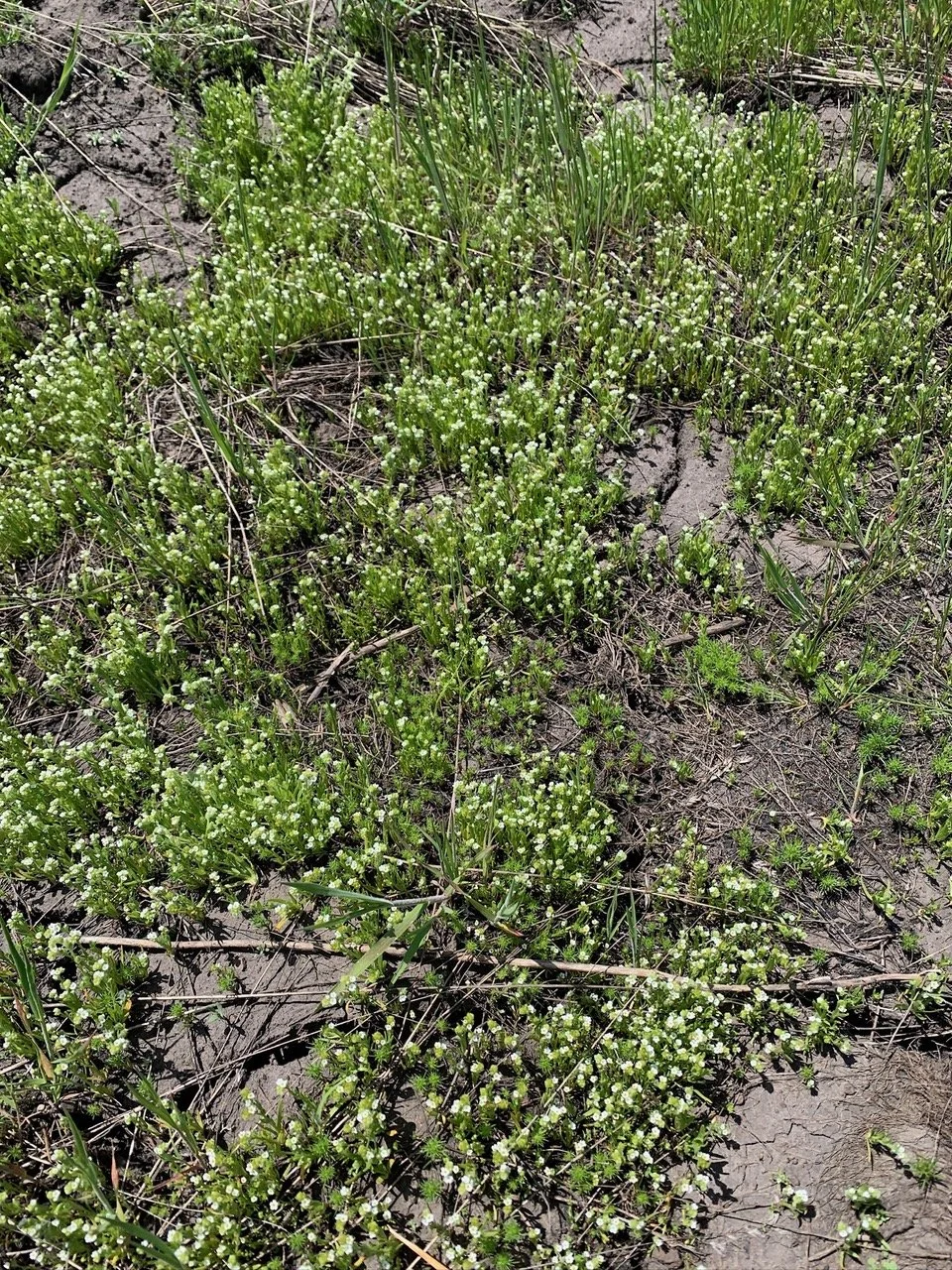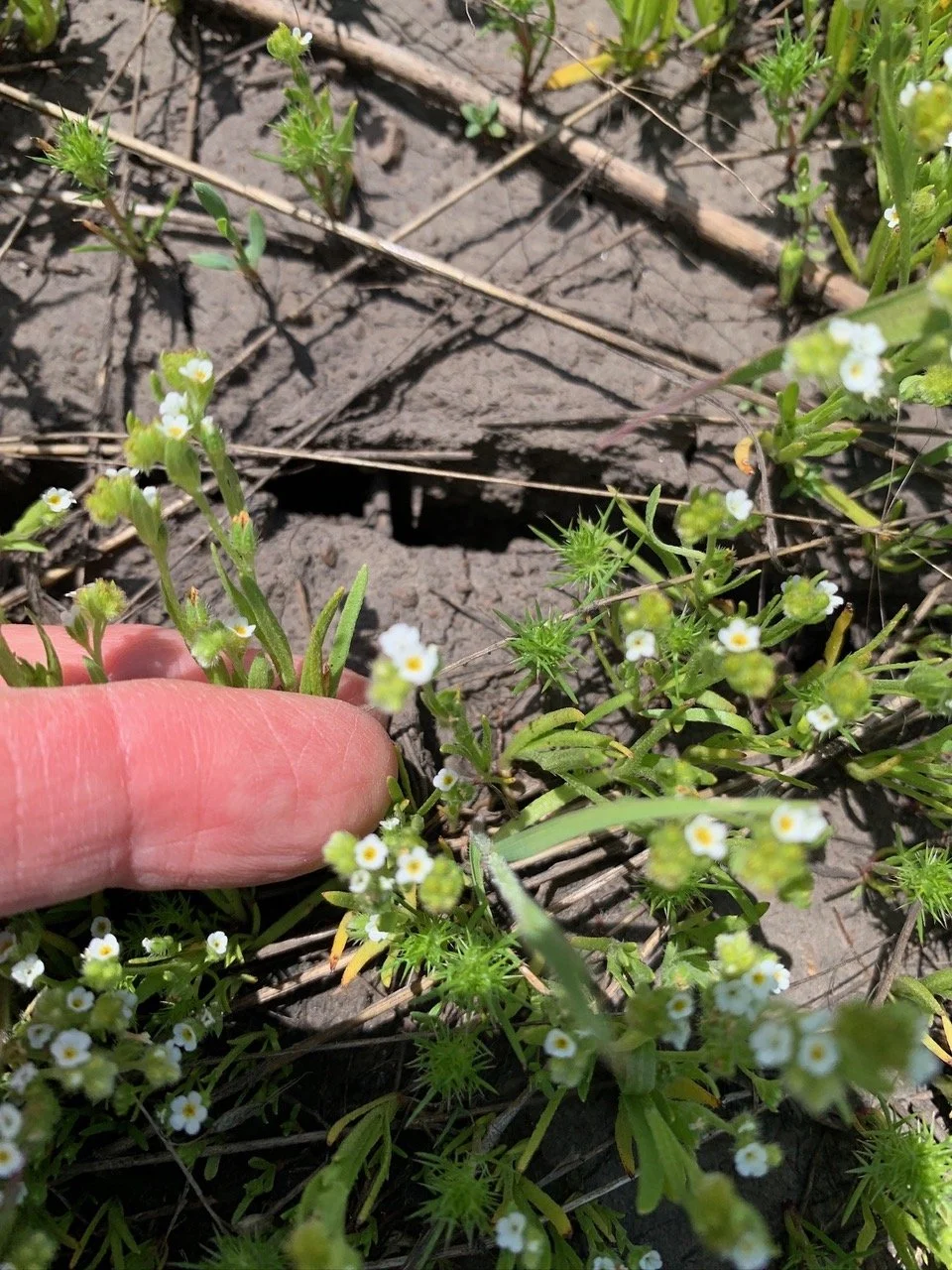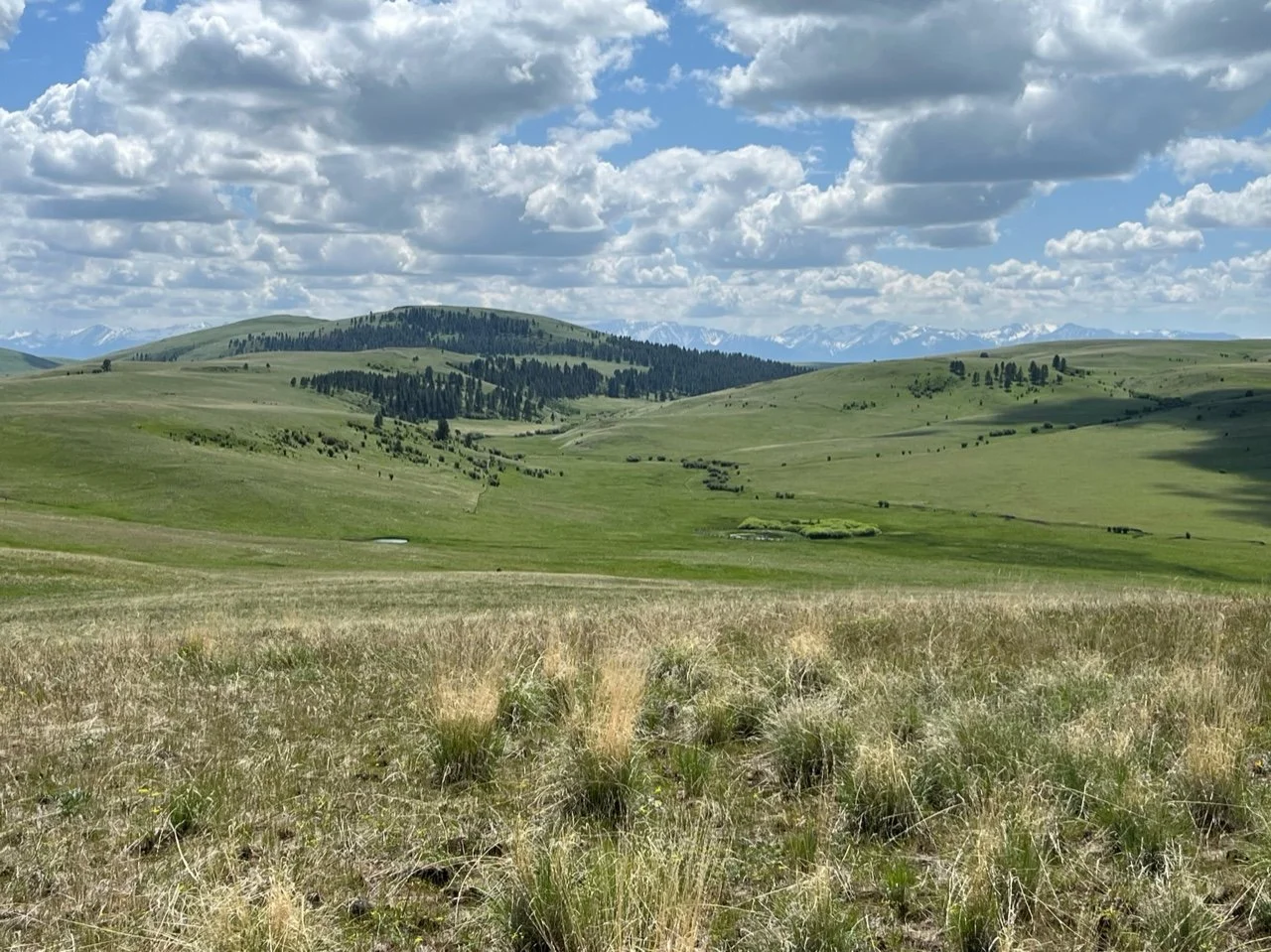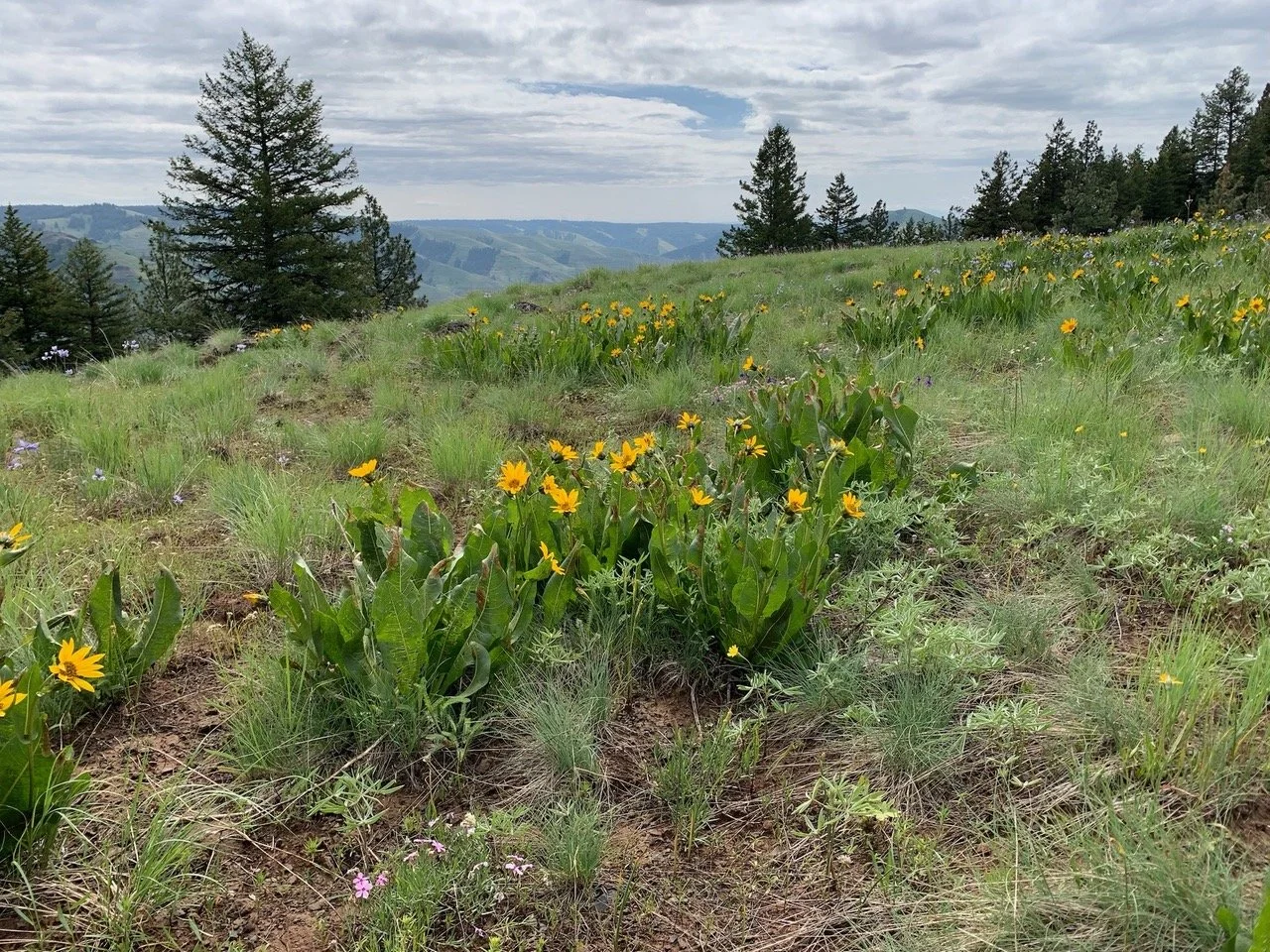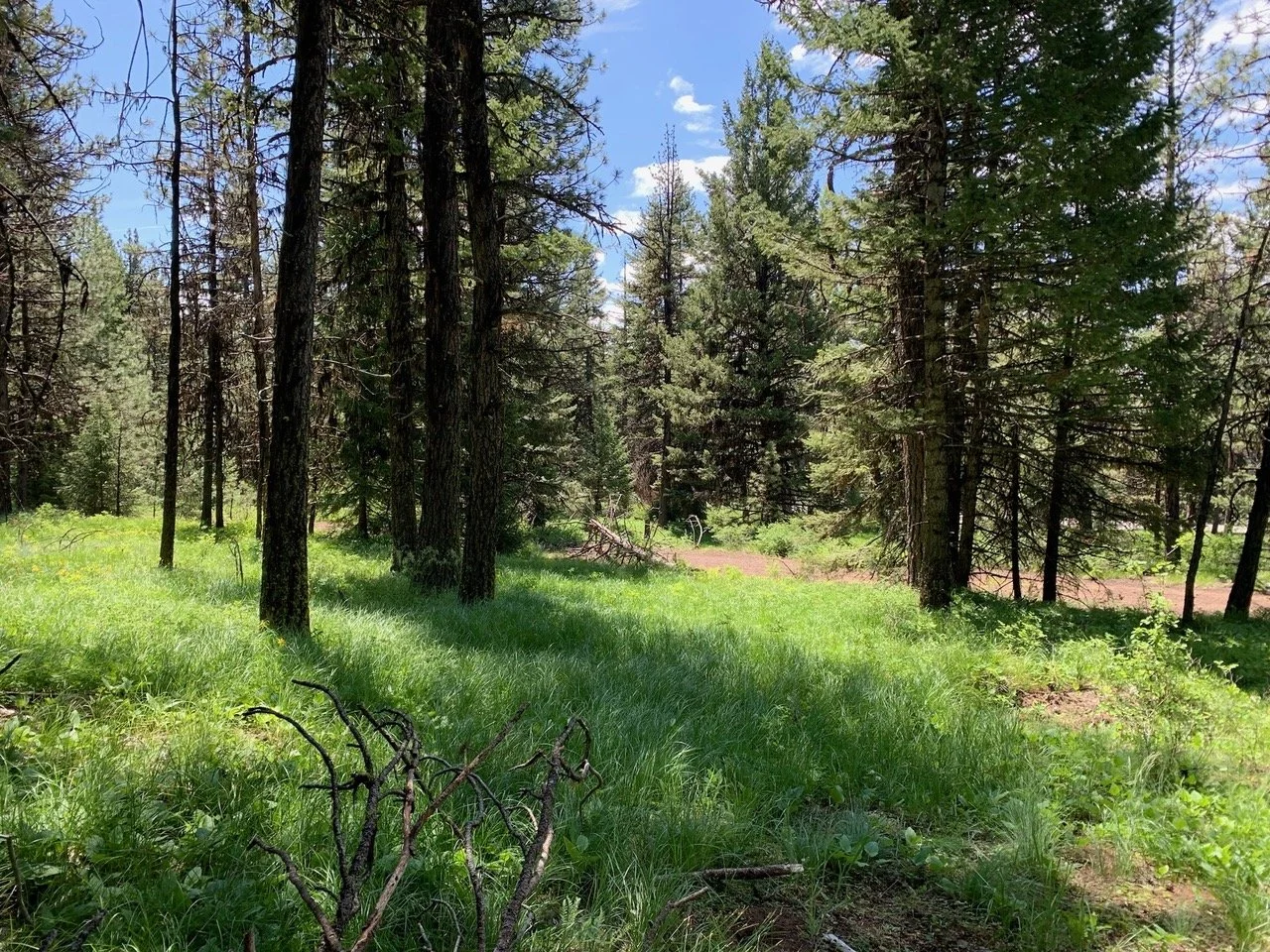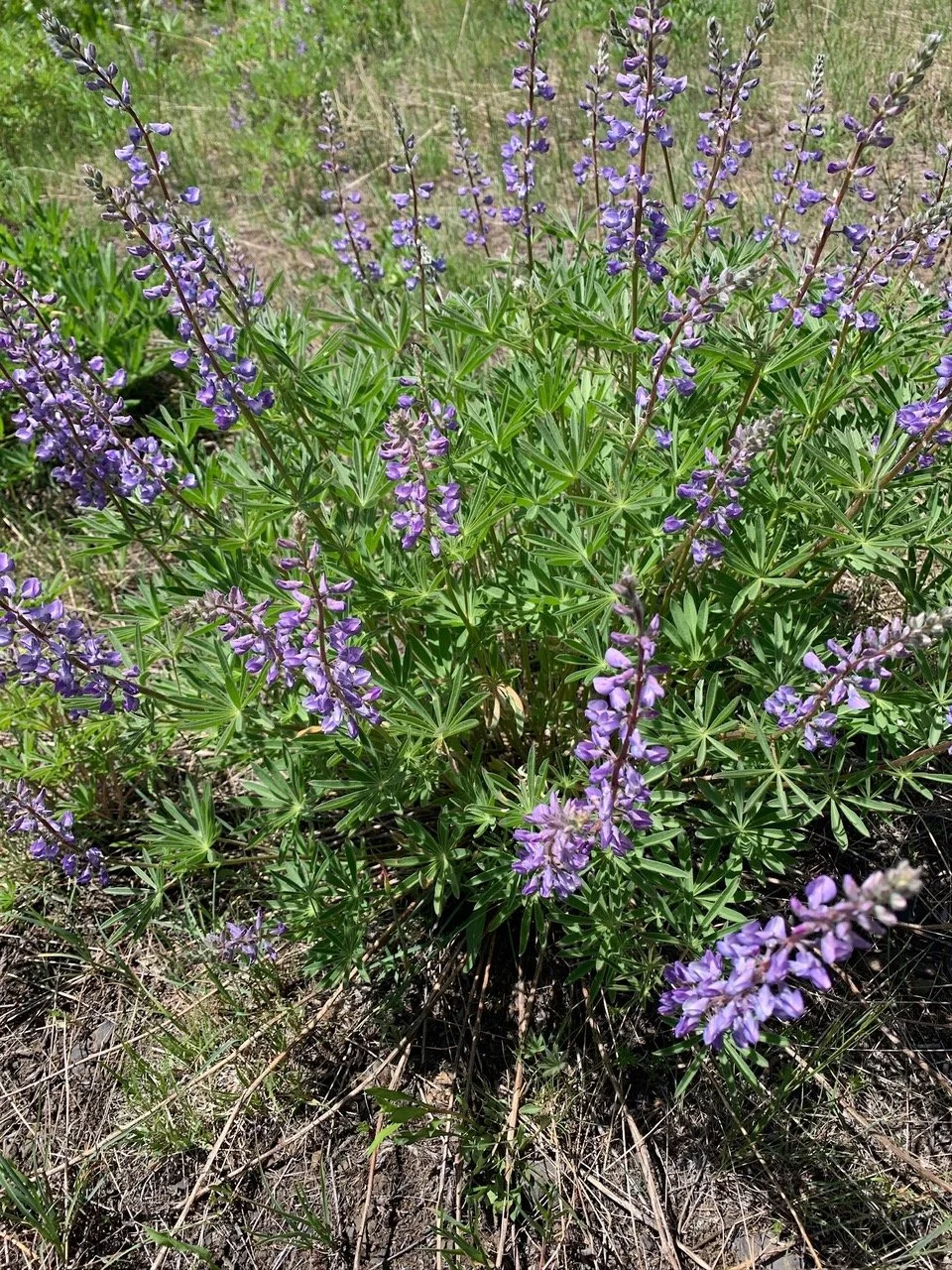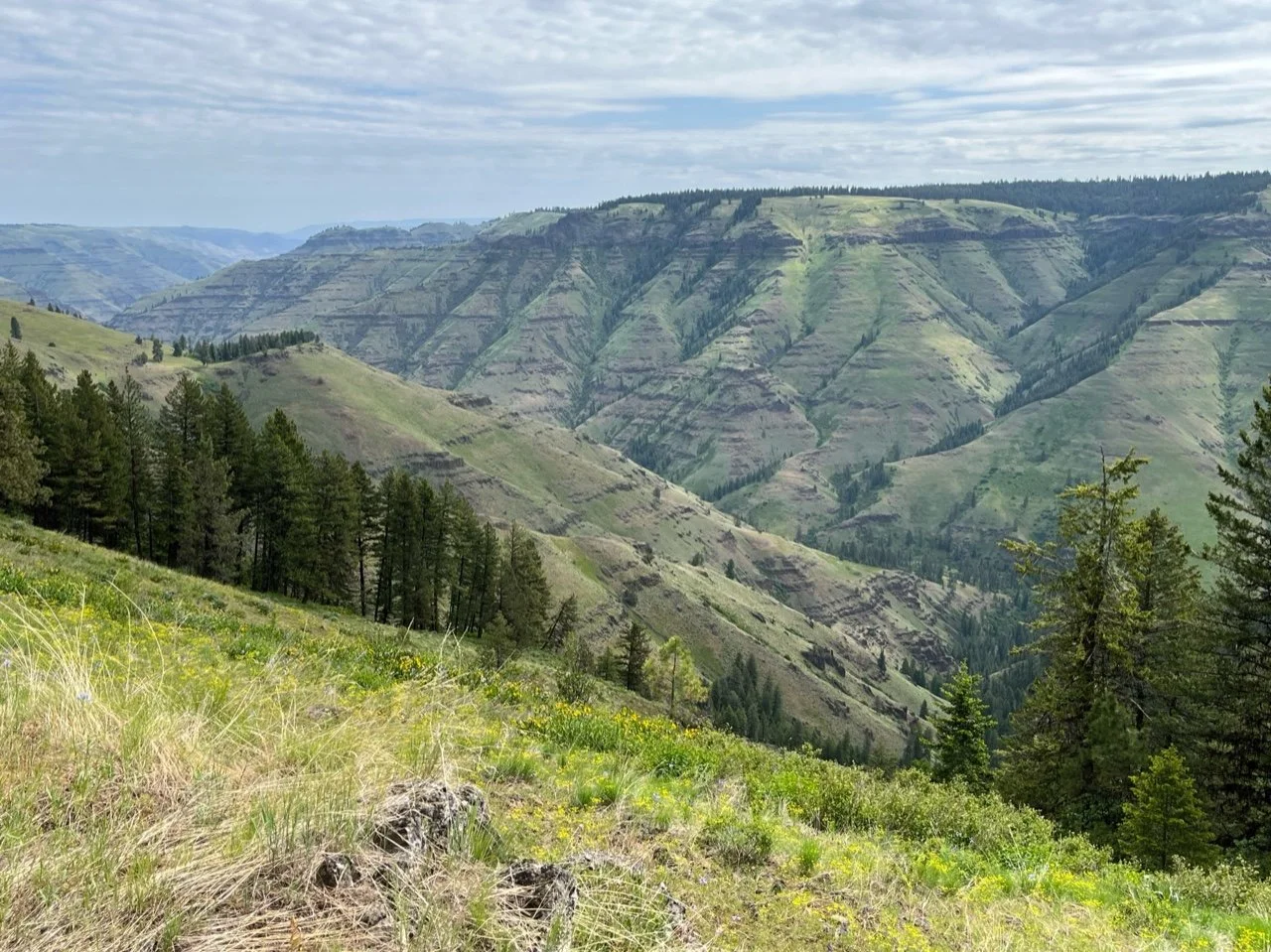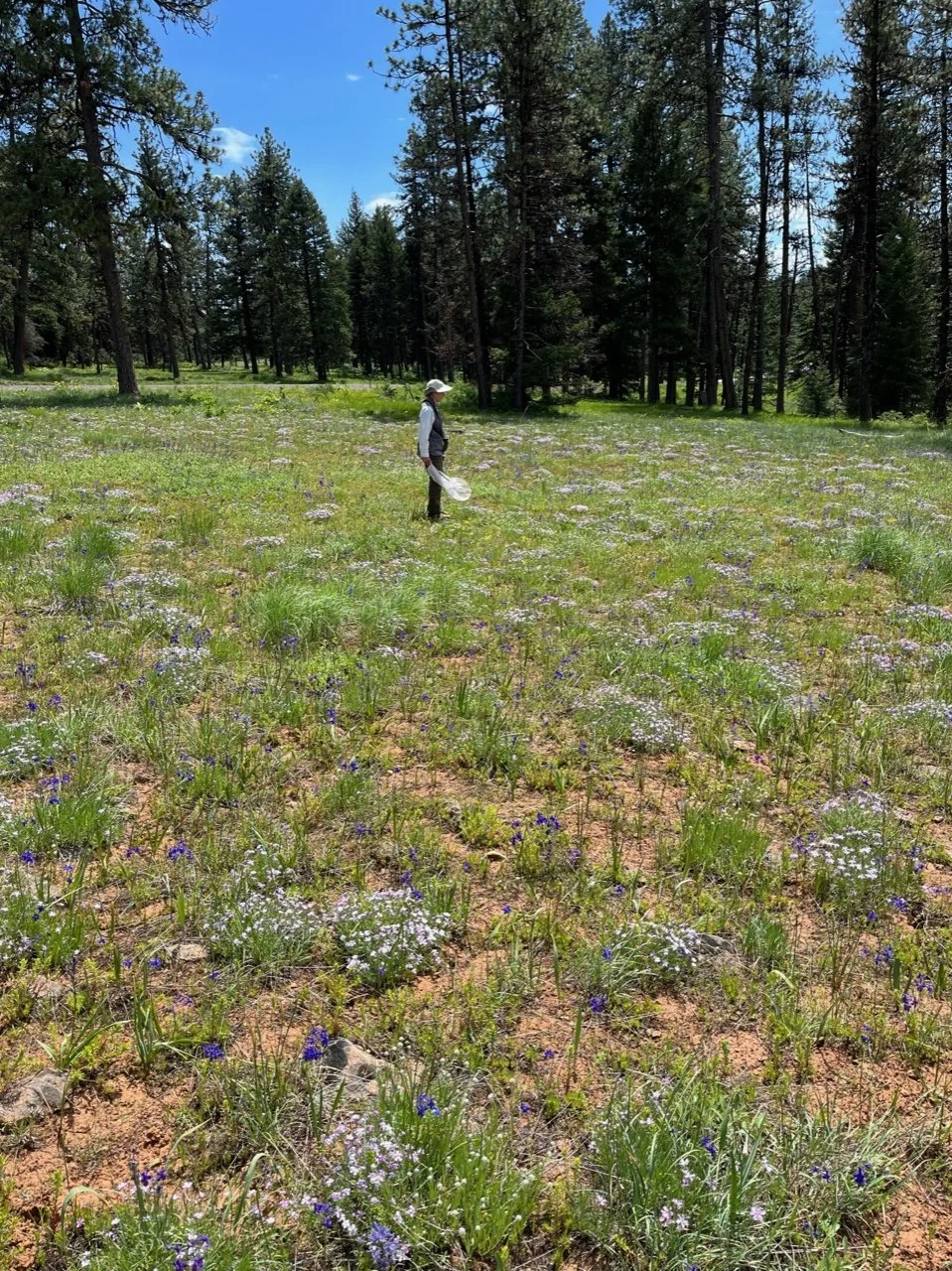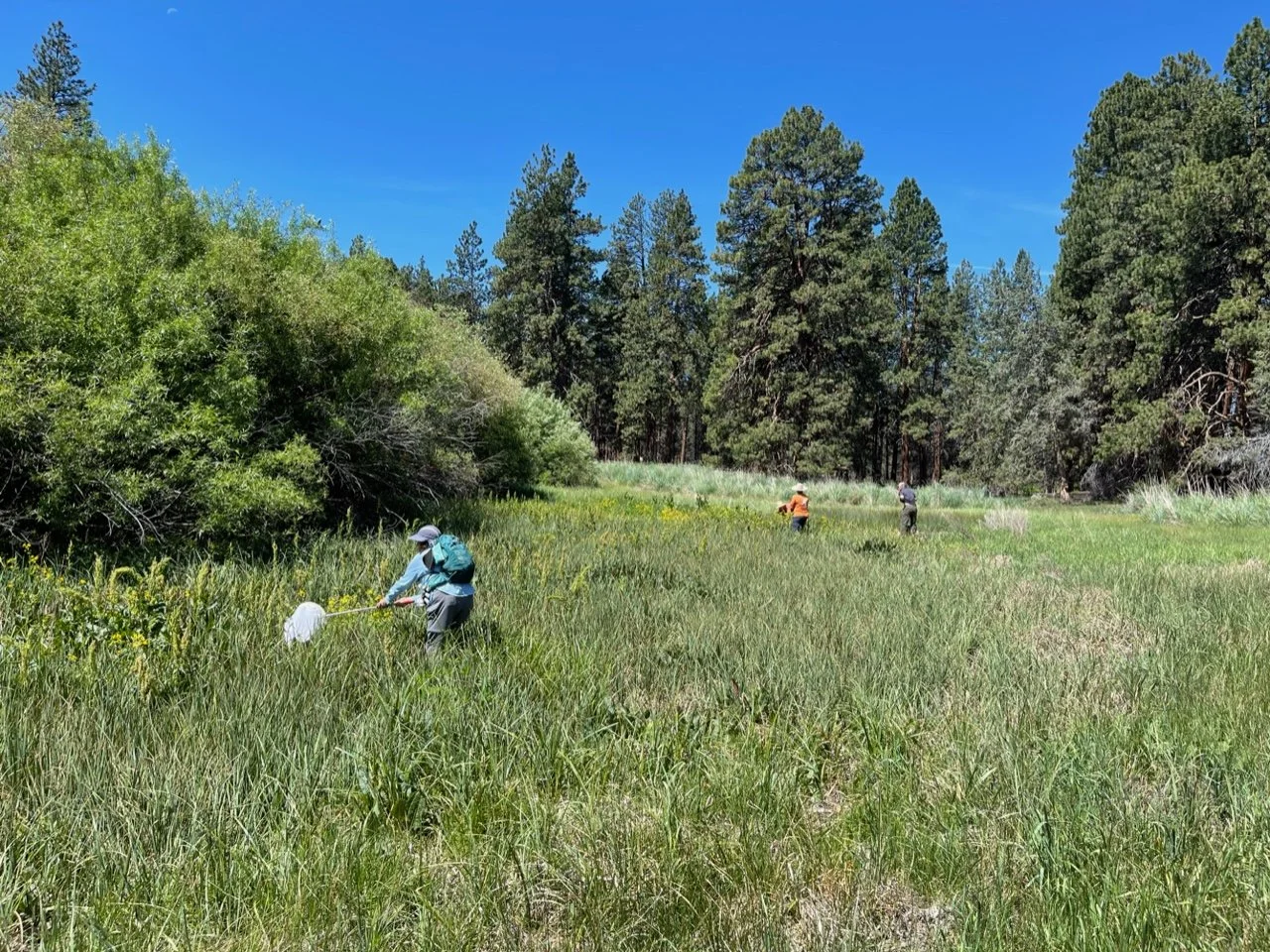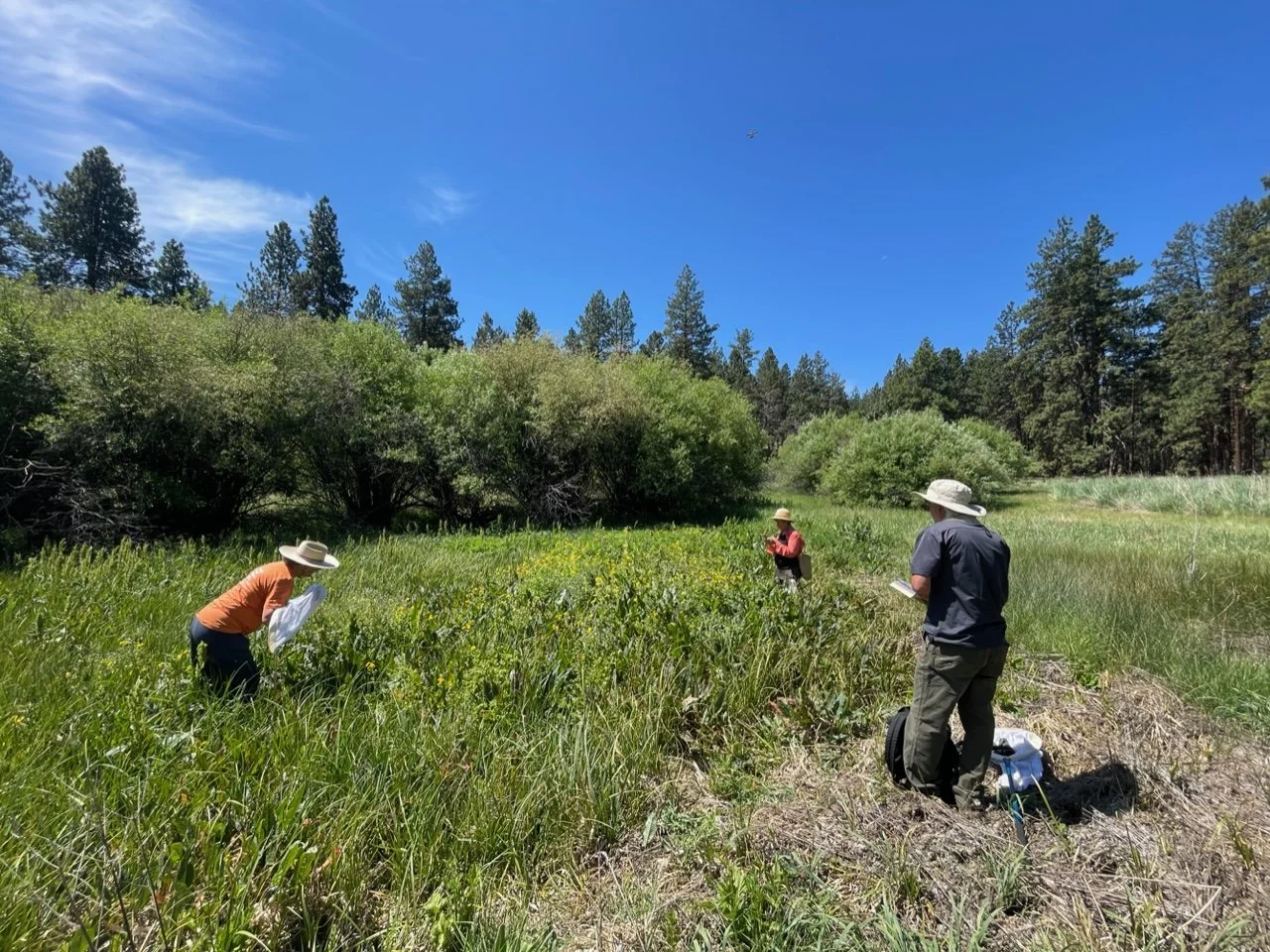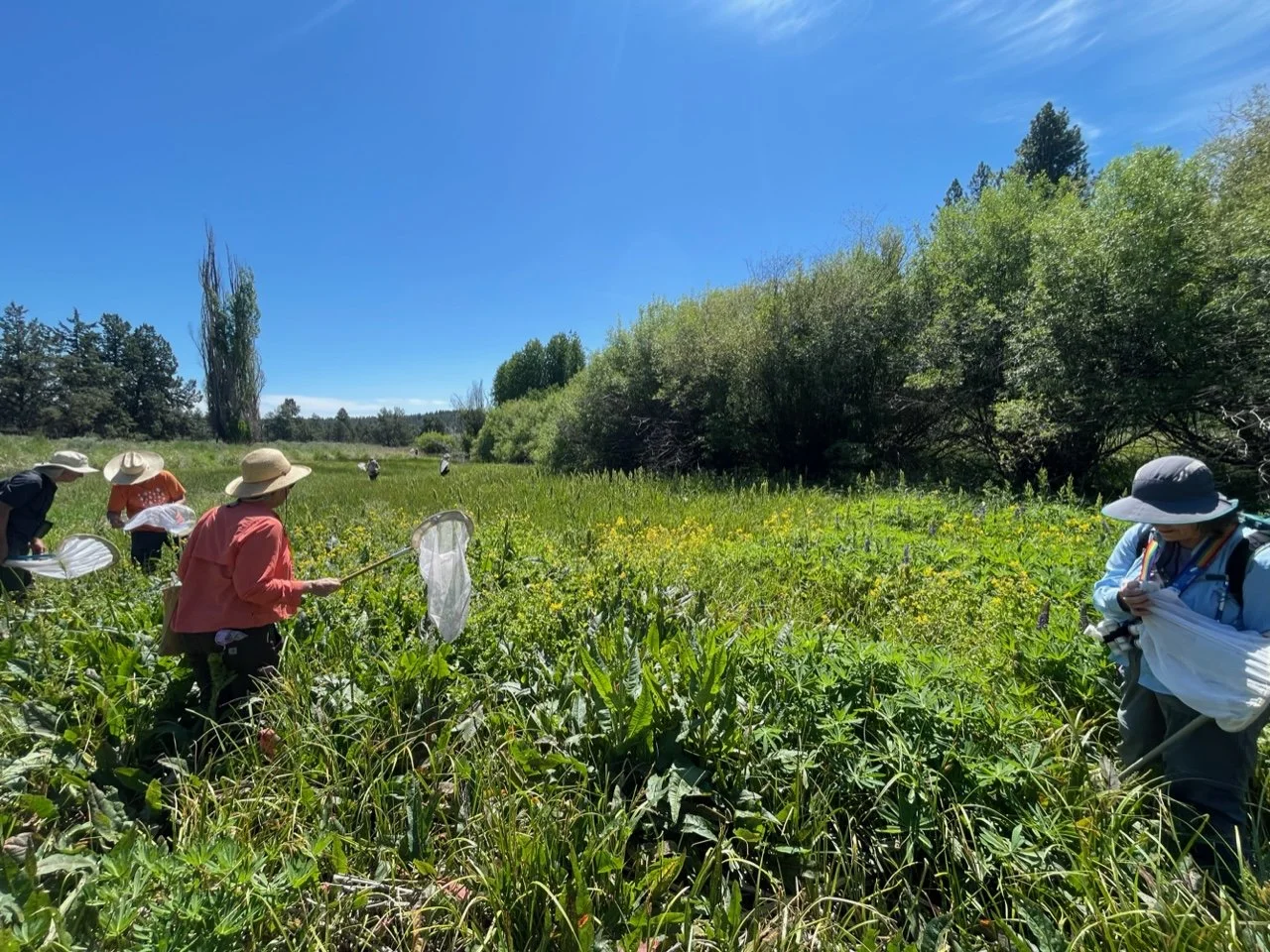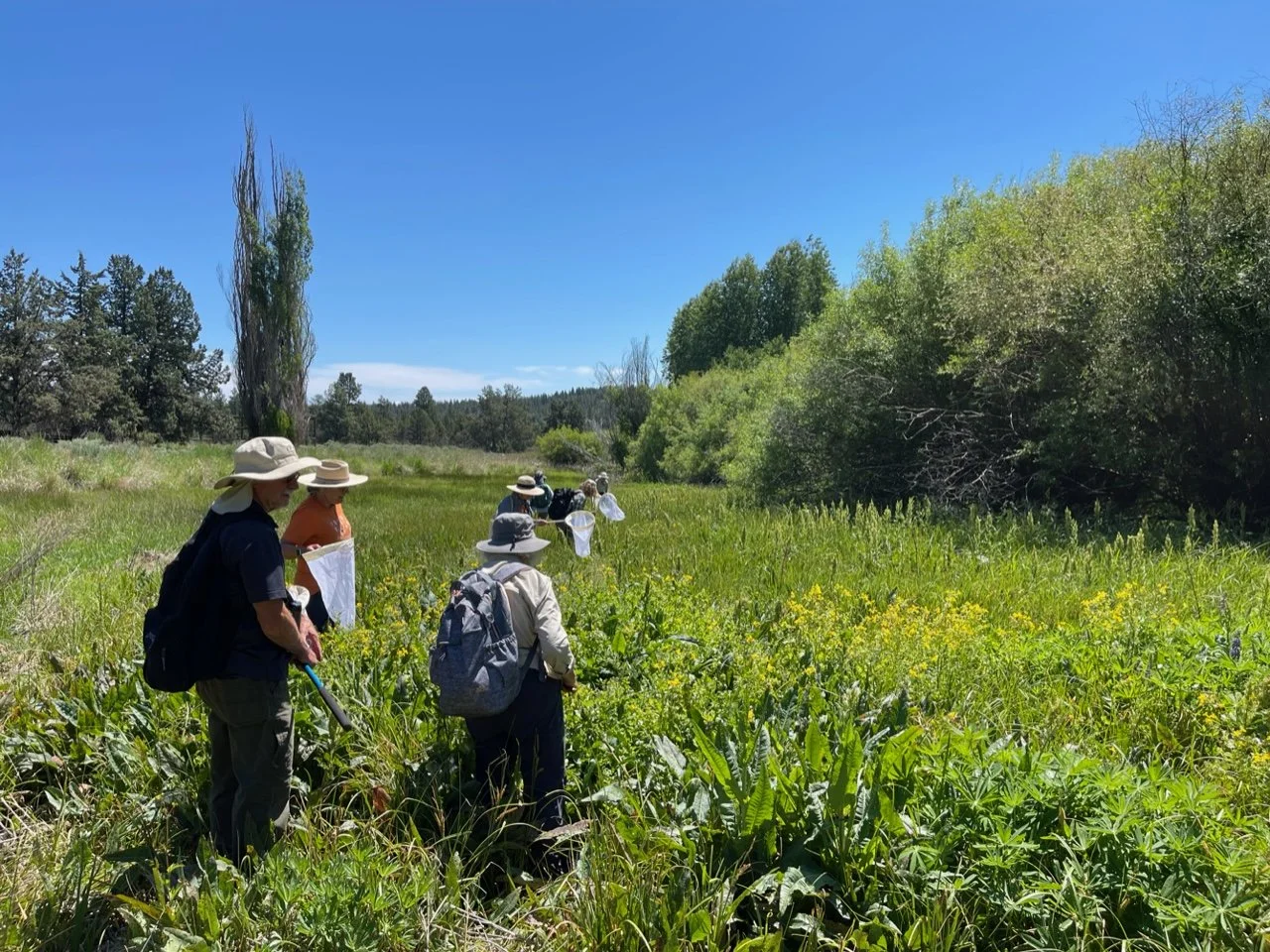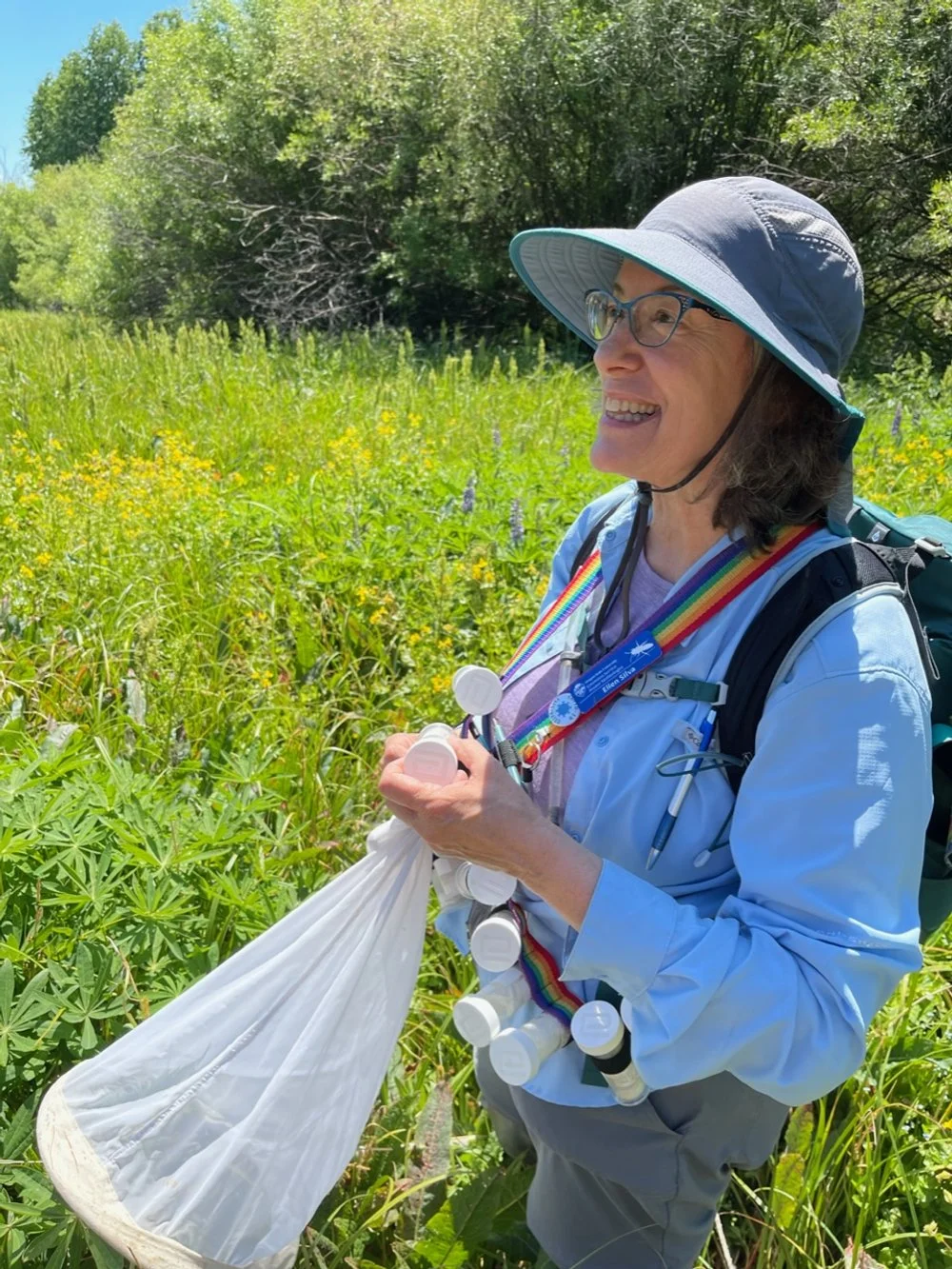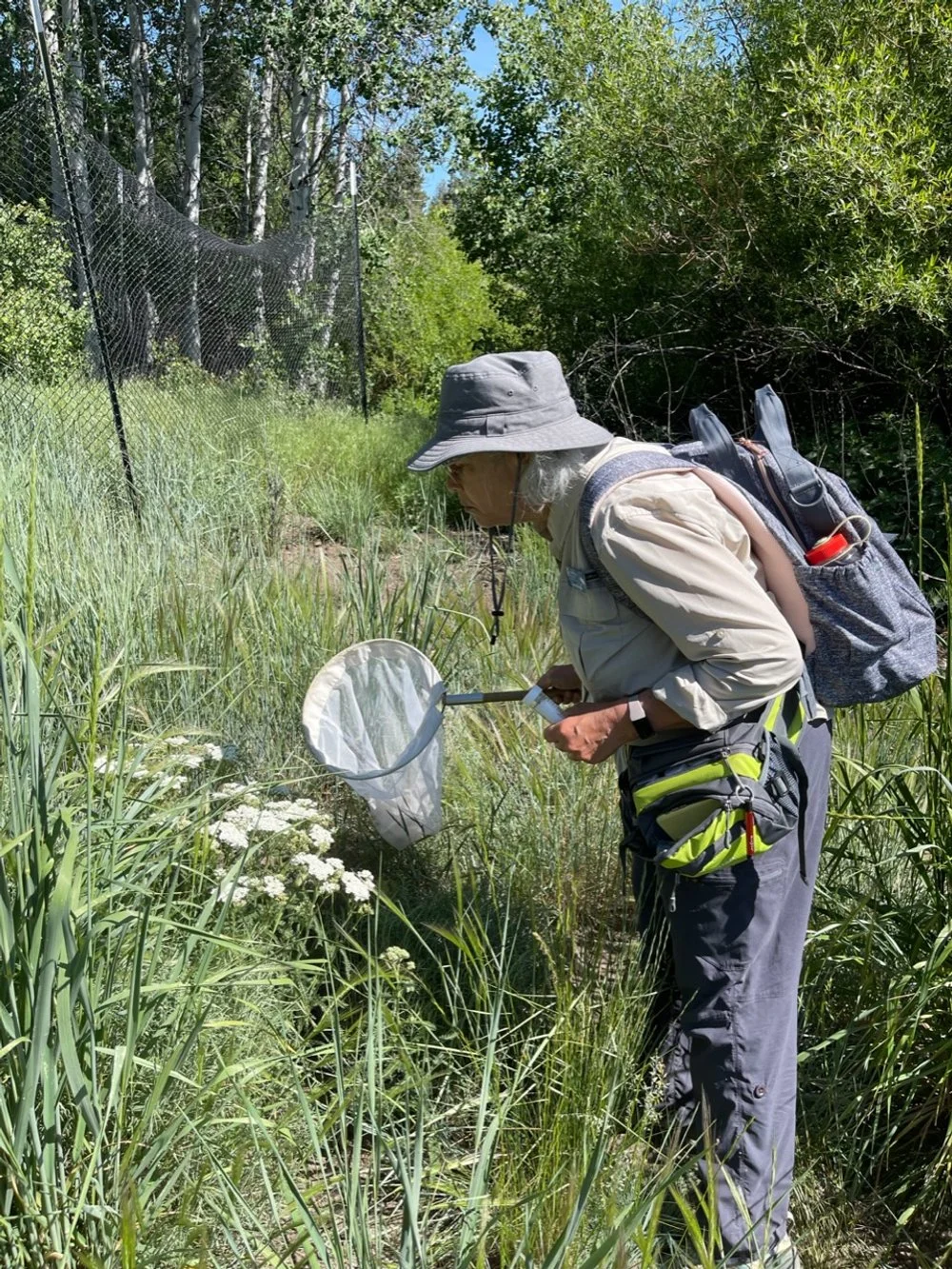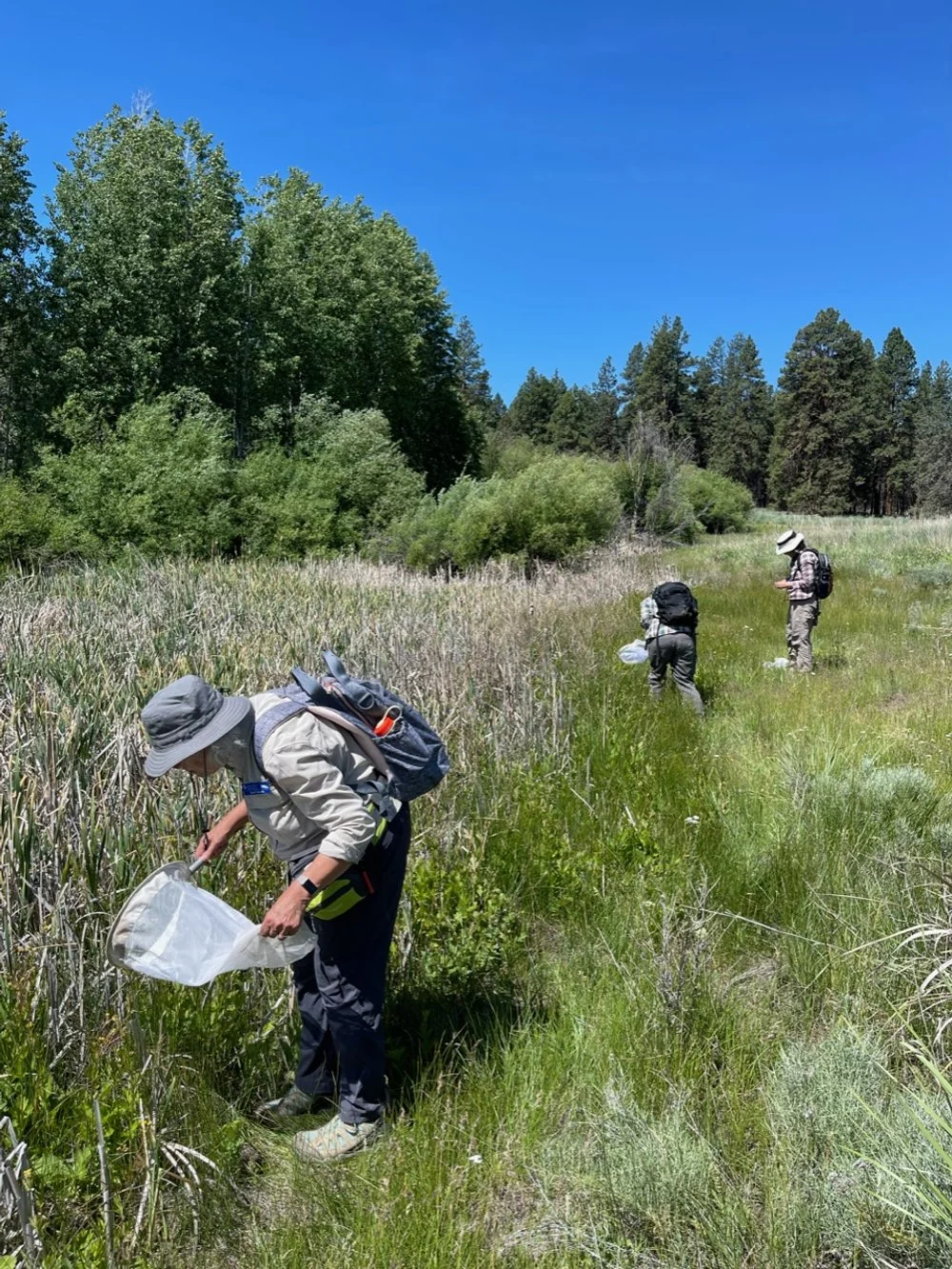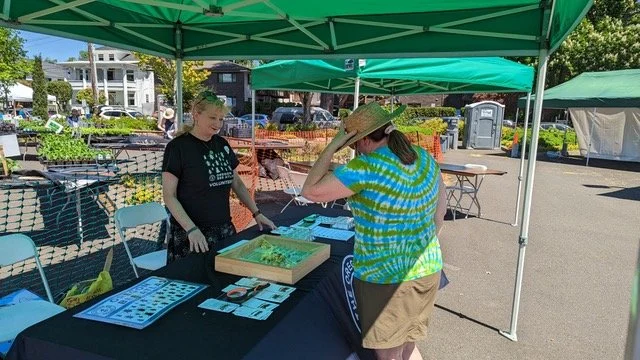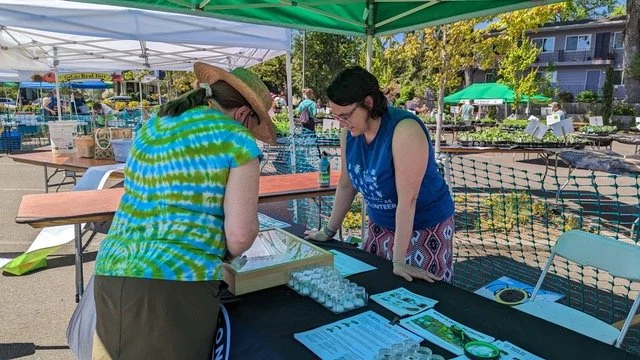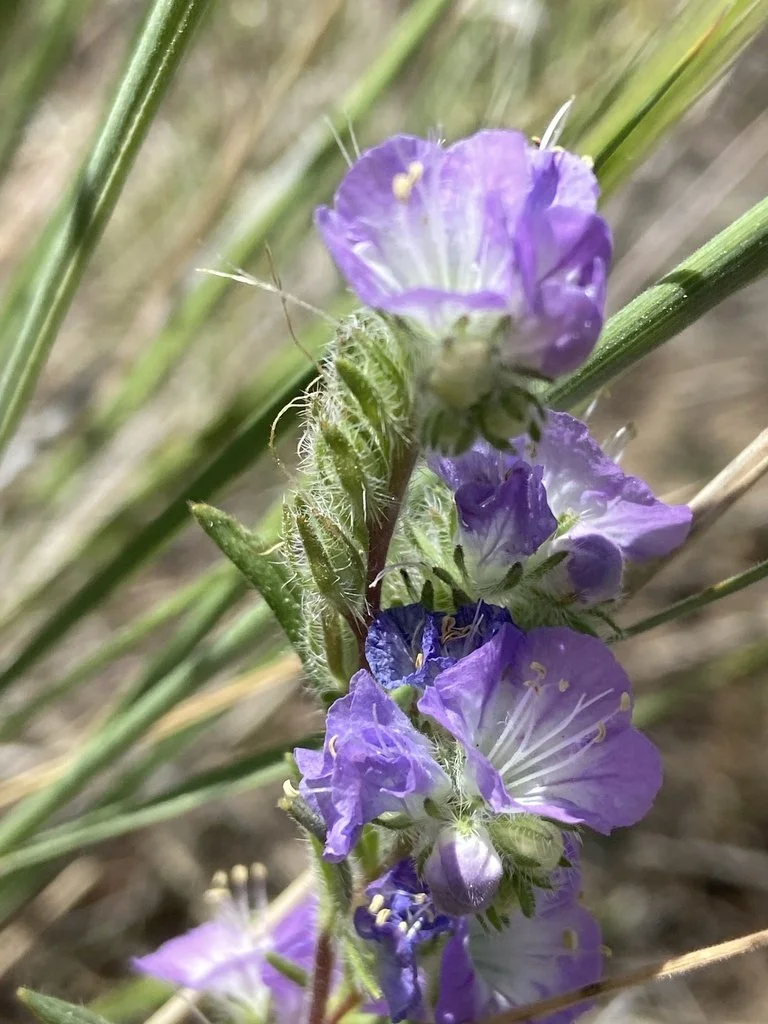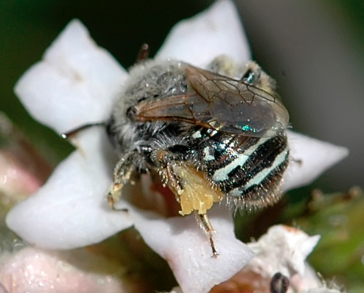Bees are buzzing, and so is the OBA.
I had to go take a nap after including all the great work you OBA members are doing this summer, what with the many outreach events and collecting and training gatherings. Do read through to the end after you look through the pretty pictures, so you don’t miss any of the fun extras.
If you have any feedback or submission for Field Notes or if you want to post notes for your regional team contact Ellen Silva (e.silva@comcast.net). Photo credits are at end of newsletter.
In this issue
Field Notes
Portland Metro permit now live for select parks
The restoration work at Clear Creek Natural Area makes for good collecting. Clear Creek is one of the 6 Metro Parks or Natural Areas where we are allowed to collect. Thanks to Mike Bogar for organizing this May 27 collection event.
The Metro permit is now live - be sure to follow the contact procedure listed in the permit, which is available on Canvas. You can also watch the calendar for events planned by your fellow OBA members — these are popular collecting sites, so there will certainly be more as the summer goes on. (The tarweed at Graham Oaks is sooo good for bees!)
We had quite the collection of collecting events in may/early june!
Both OBA staff-organized and member-created events helped us fill our nets and vials the last few weeks. I can’t emphasize enough that checking the calendar FREQUENTLY is the best way to stay up to date on opportunities.
A coastal visitor to NE Oregon - submitted by Rebecca Cheek of Lincoln County
Far northeastern Oregon is green and blooming and the spring bees are out! On June 2, I (made a too-short visit to a tiny corner of Zumwalt Prairie Preserve (a 33,000 acre Nature Conservancy property) There were a very few bumblebee queens and early workers flying, but other bees were out in numbers: Anthophora, Osmia, Andrena, Melecta, Nomada, Lasioglossum, plus lots of little black bees that will take some scope work to identify. Bees were collected on Potentilla, Penstemon, Eriogonum, Frasera, Geranium, and assorted yellow daisies, plus a drying swale carpeted by a tiny popcornflower (Plagiobothrys) that was swarming with tiny bees and wasps. As usual on collecting adventures, there’s always something unexpected to see. On this day it was a very large stray bull that spent the morning wandering around the vicinity of the barn and nearby trail, causing me to frequently revise my plans for hike direction. At least on the open prairie, it’s easy to see an animal that size from a respectful distance!
There will be many more flowers (and bees!) yet to come as the season progresses. OBA has a permit to collect on Zumwalt Prairie (see the Permits section in Canvas for details) but check in with the Preserve Manager before you go. The preserve is located about 22 miles from Enterprise on good gravel roads, but some roads on the preserve are only suitable for high clearance vehicles. There is an information kiosk at Duckett Barn, but no drinking water or toilets. Also no cell service. More information and maps here: https://www.nature.org/content/dam/tnc/nature/en/documents/zumwalt-prairie-trails-tour-map-2013.pdf
Camp Polk Field Training - Sisters, OR
On June 11, both seasoned veterans and eager new members enjoyed collecting at Camp Polk, a Deschutes Land Trust preserve just north of Sisters. Blooms included monkeyflower and linearleaf phacelia, bees reported by attendees included Halictus, Lasioglossum, Osmia, Dufourea and perhaps Chelostema. Photos shown here are courtesy of Amanda Egertson, DLT Stewardship Director.
Camassia Preserve - Multnomah County
The Nature Conservancy Camassia preserve comes by its name honestly, and the Camassia leichtlinii was almost as thick as the bee collectors at a recent collection event organized by Carol Yamada - thanks, Carol!

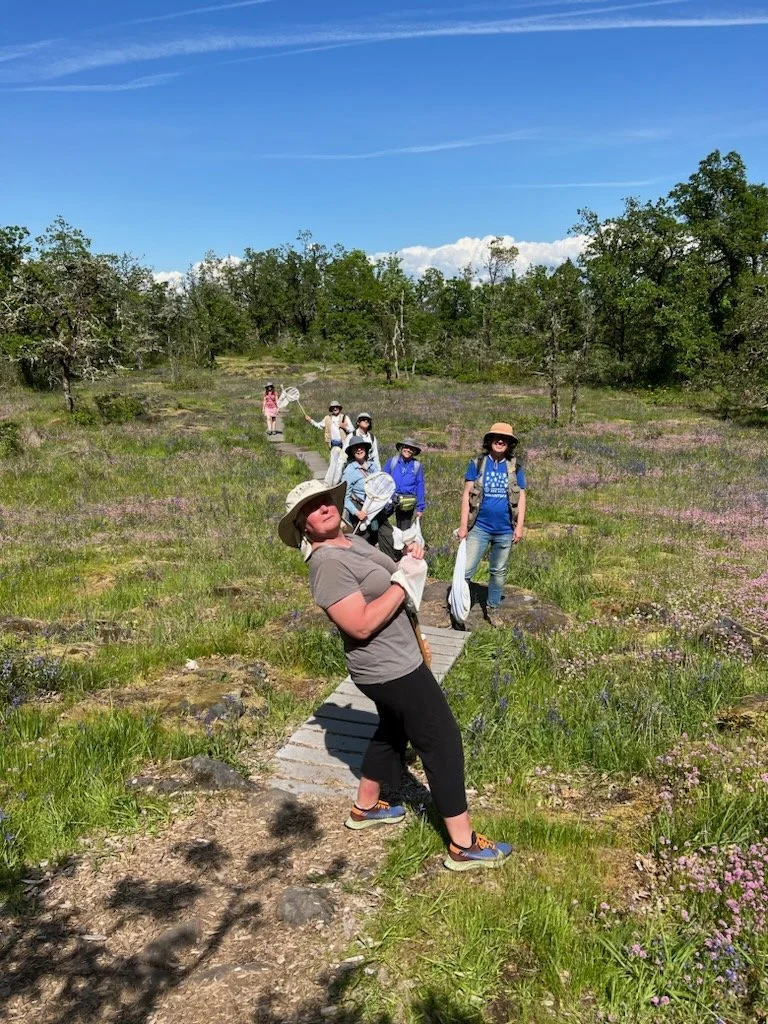

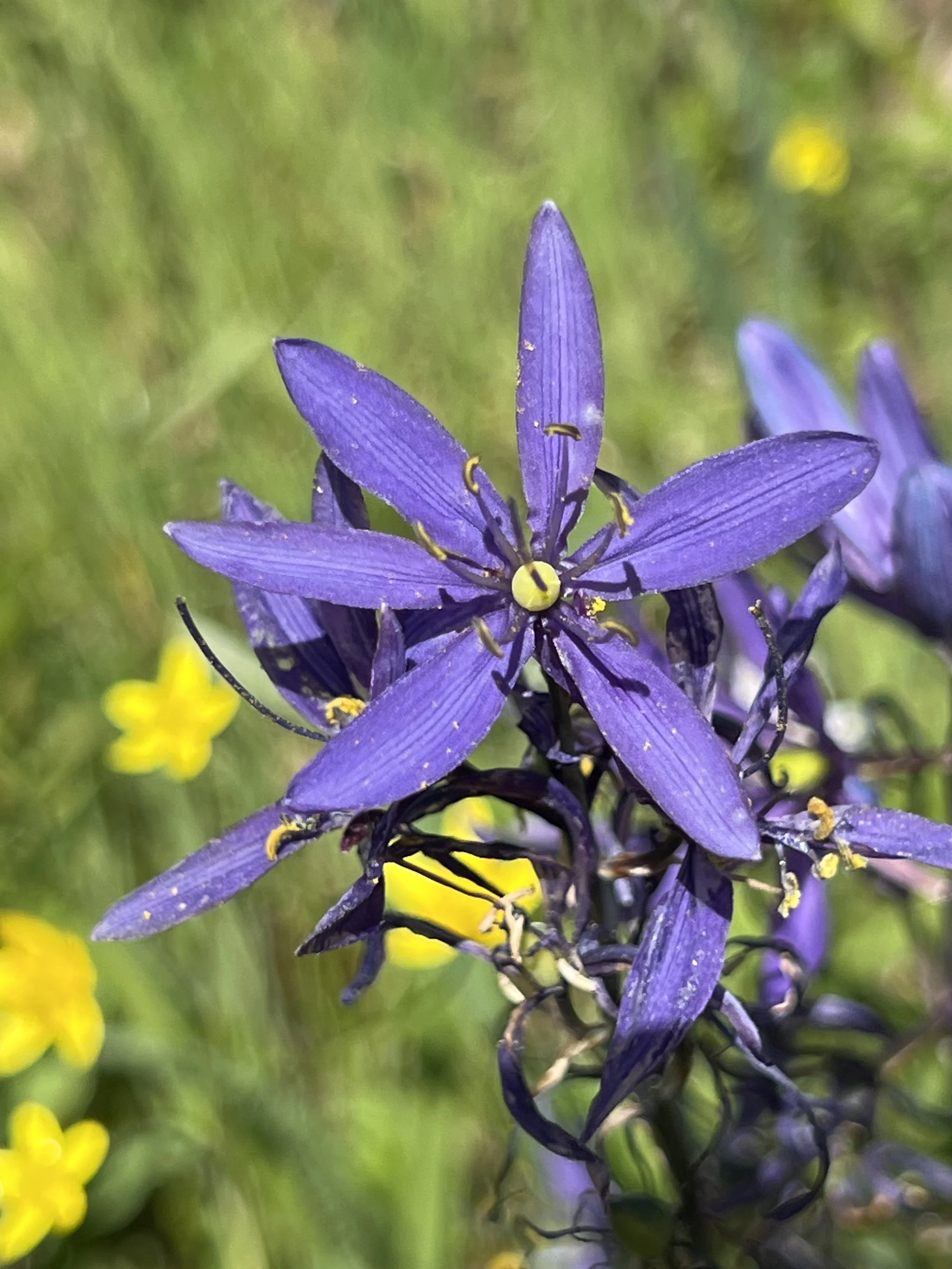

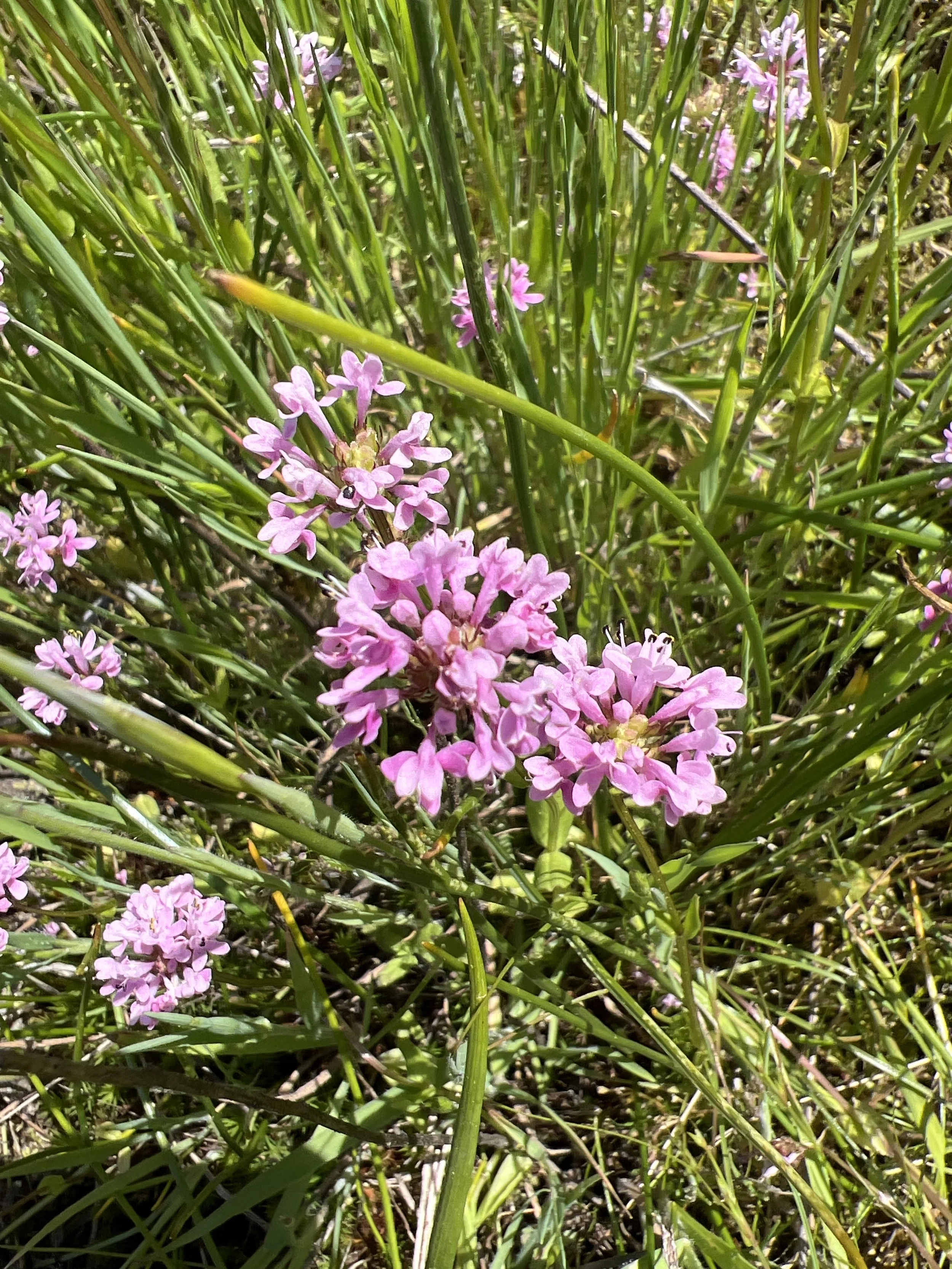
outstanding outreach events!
Shaii Stone shares her love of bees at the Multnomah Master Gardners Incredible Edibles plant sale.
Rachel Phariss also loves to share about bees!



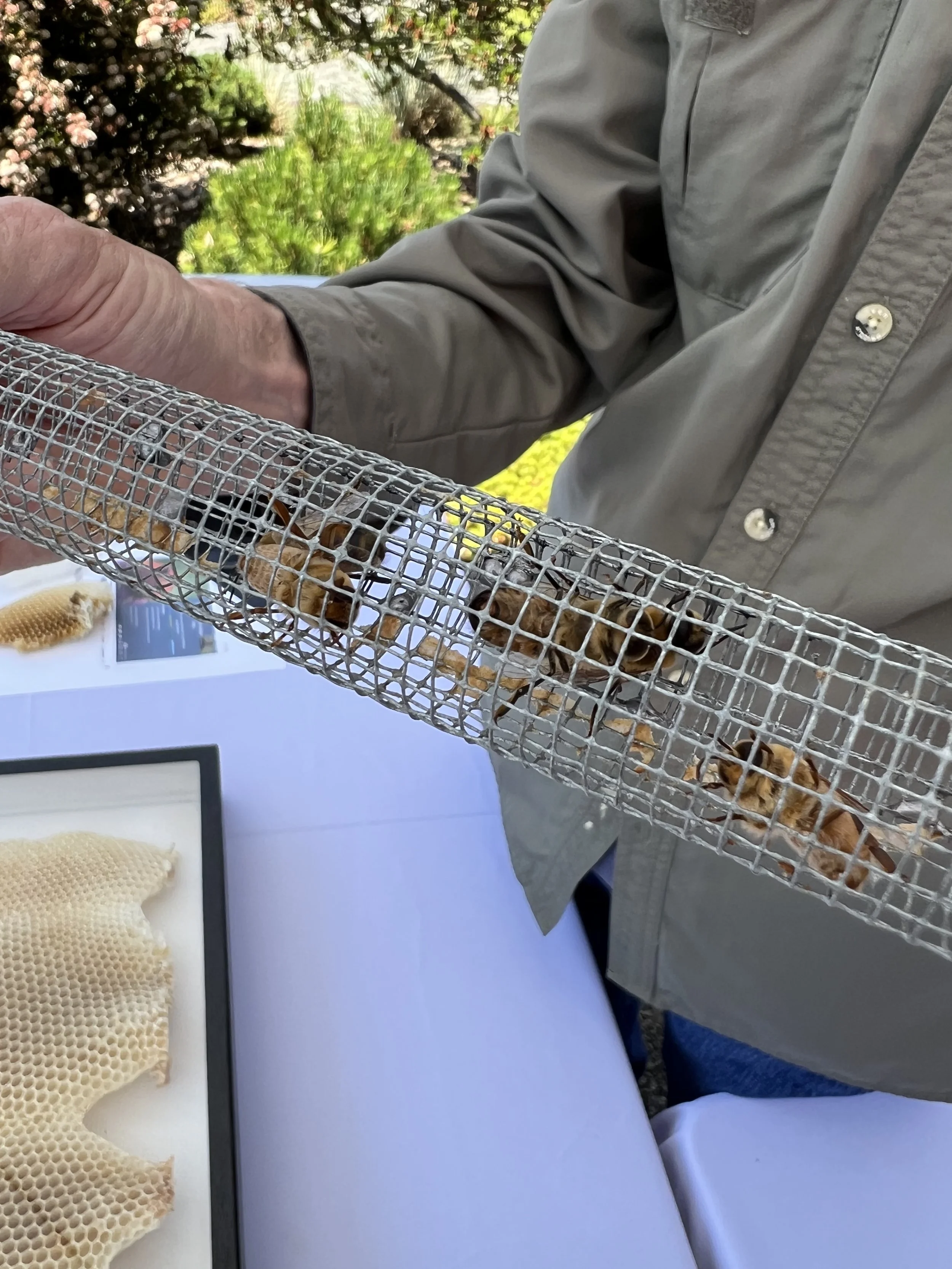
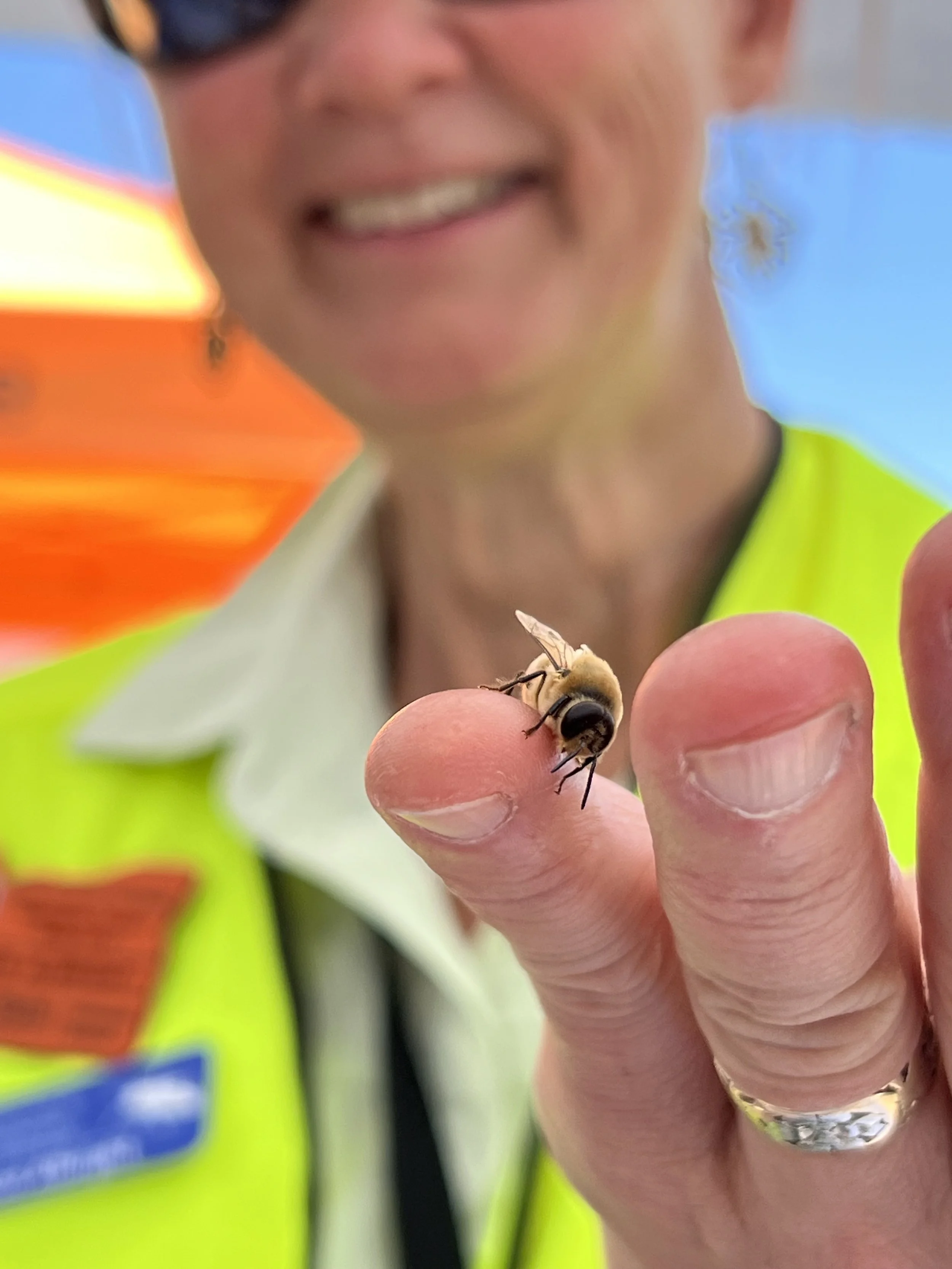
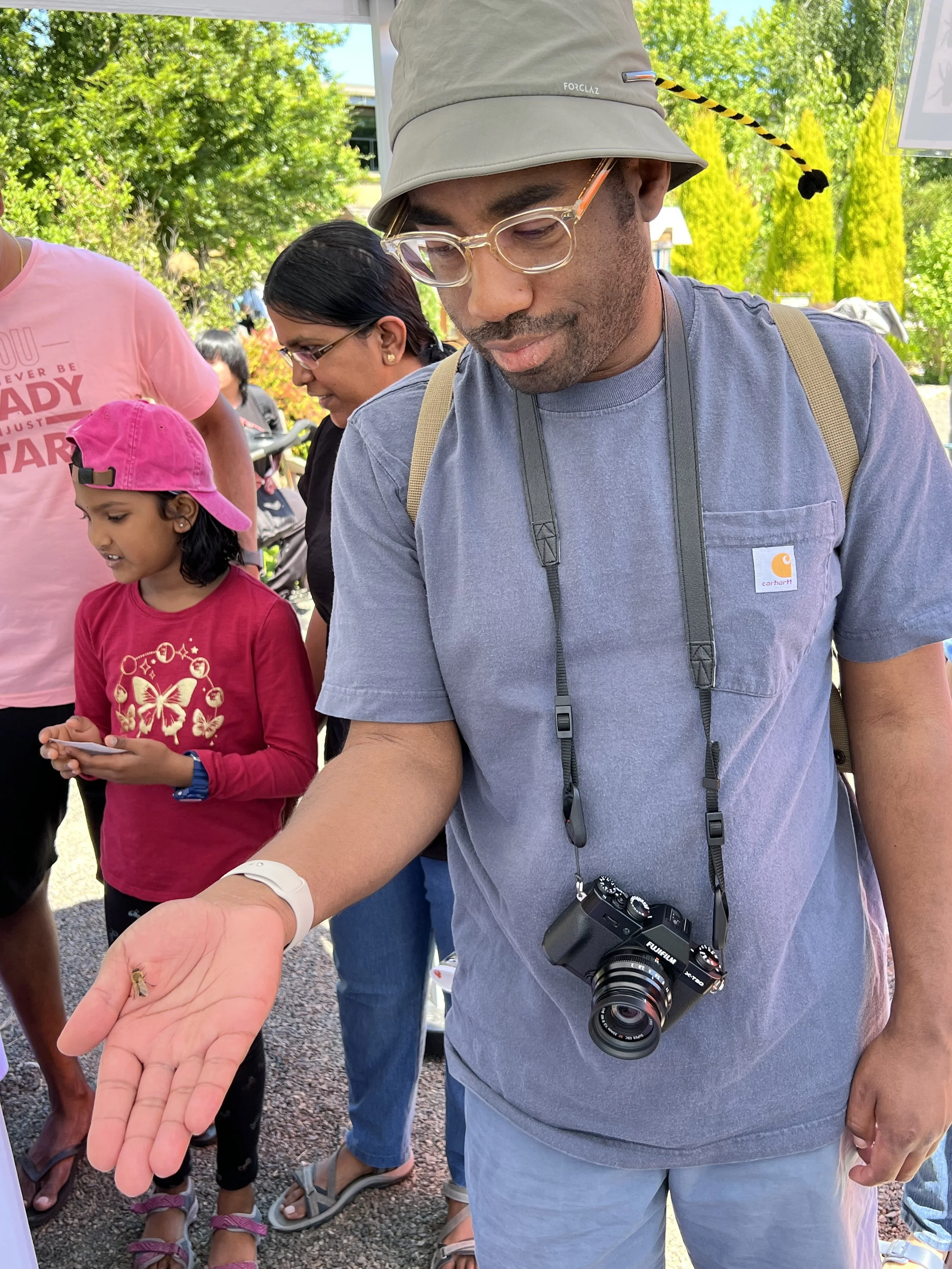
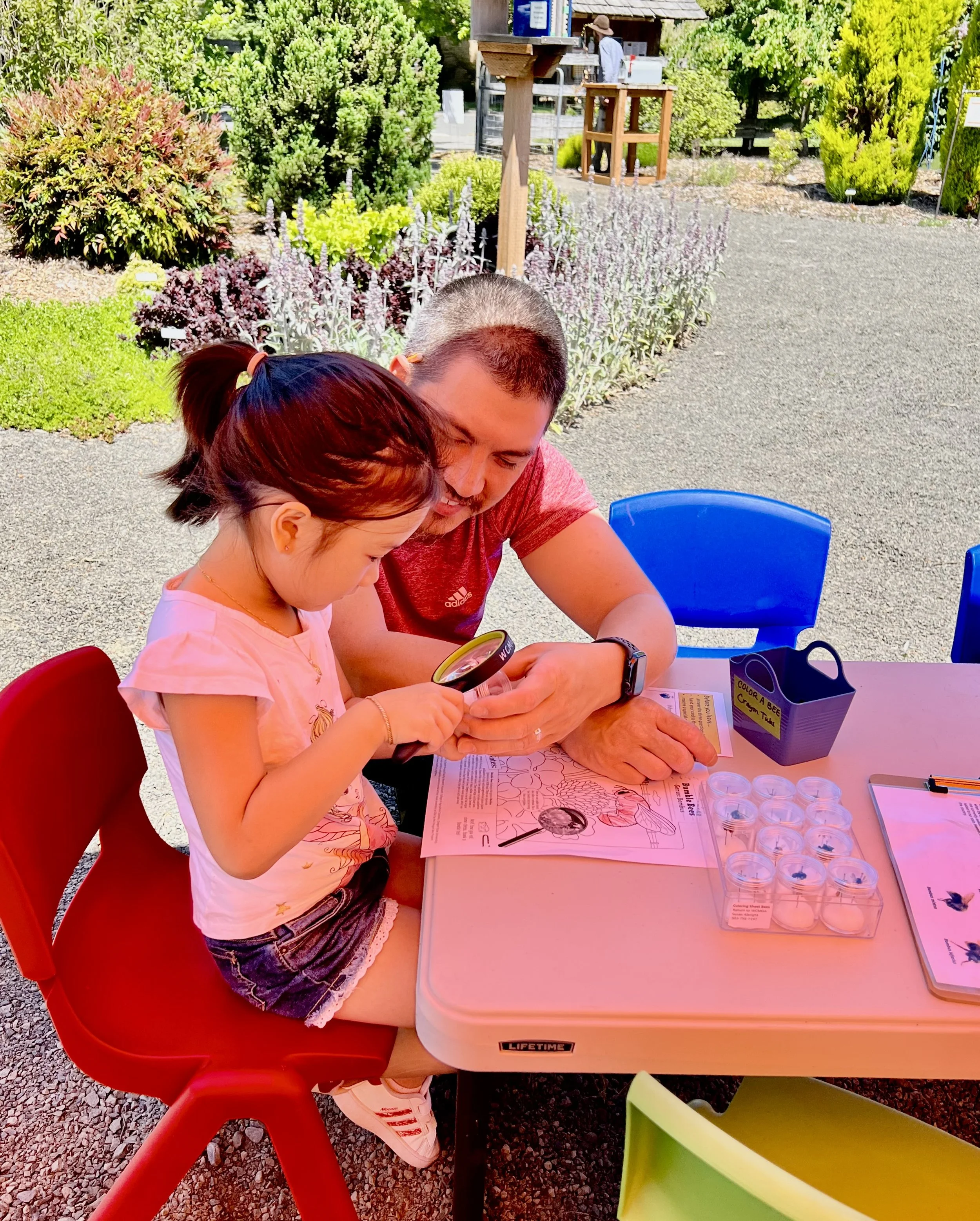
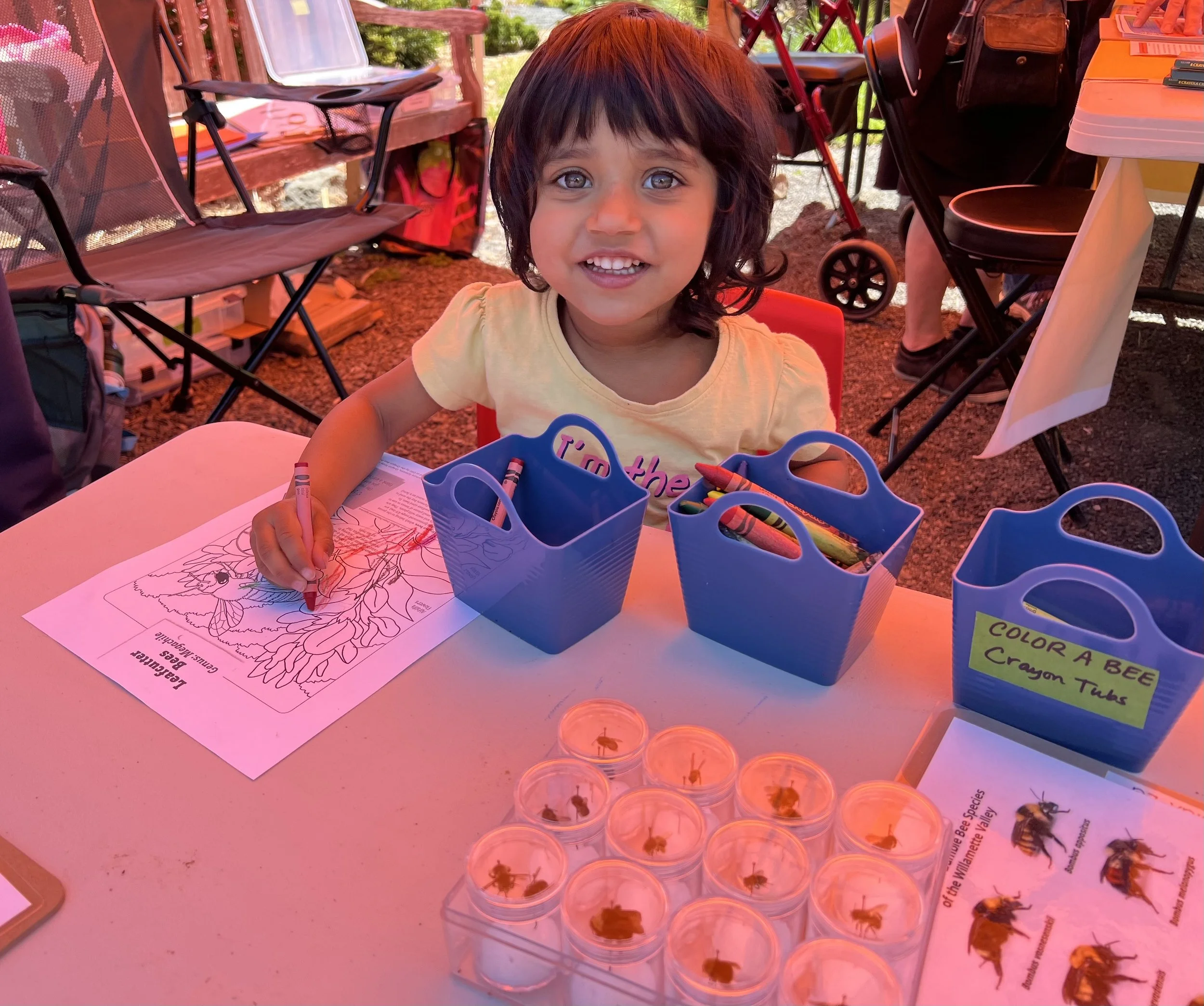
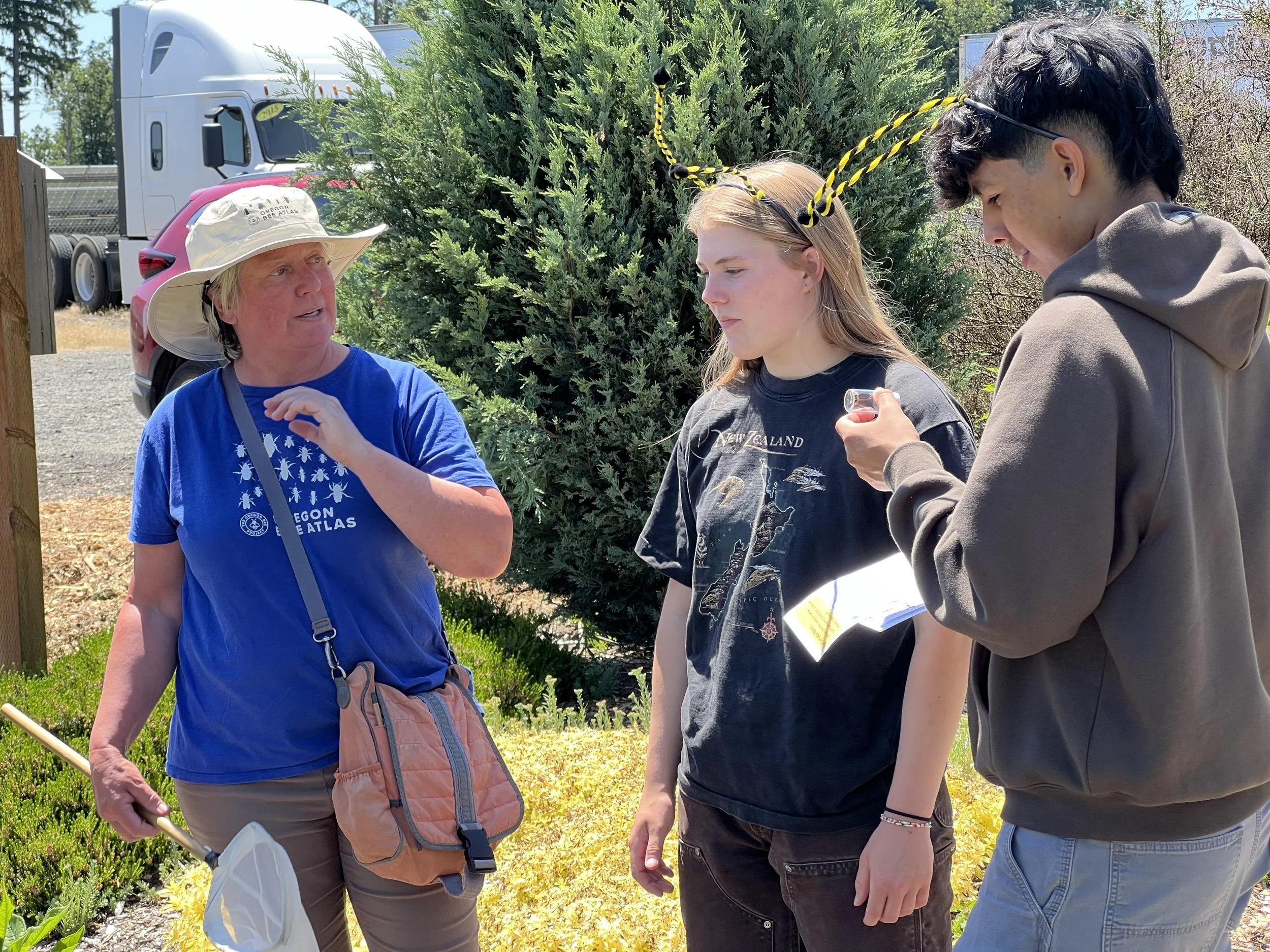
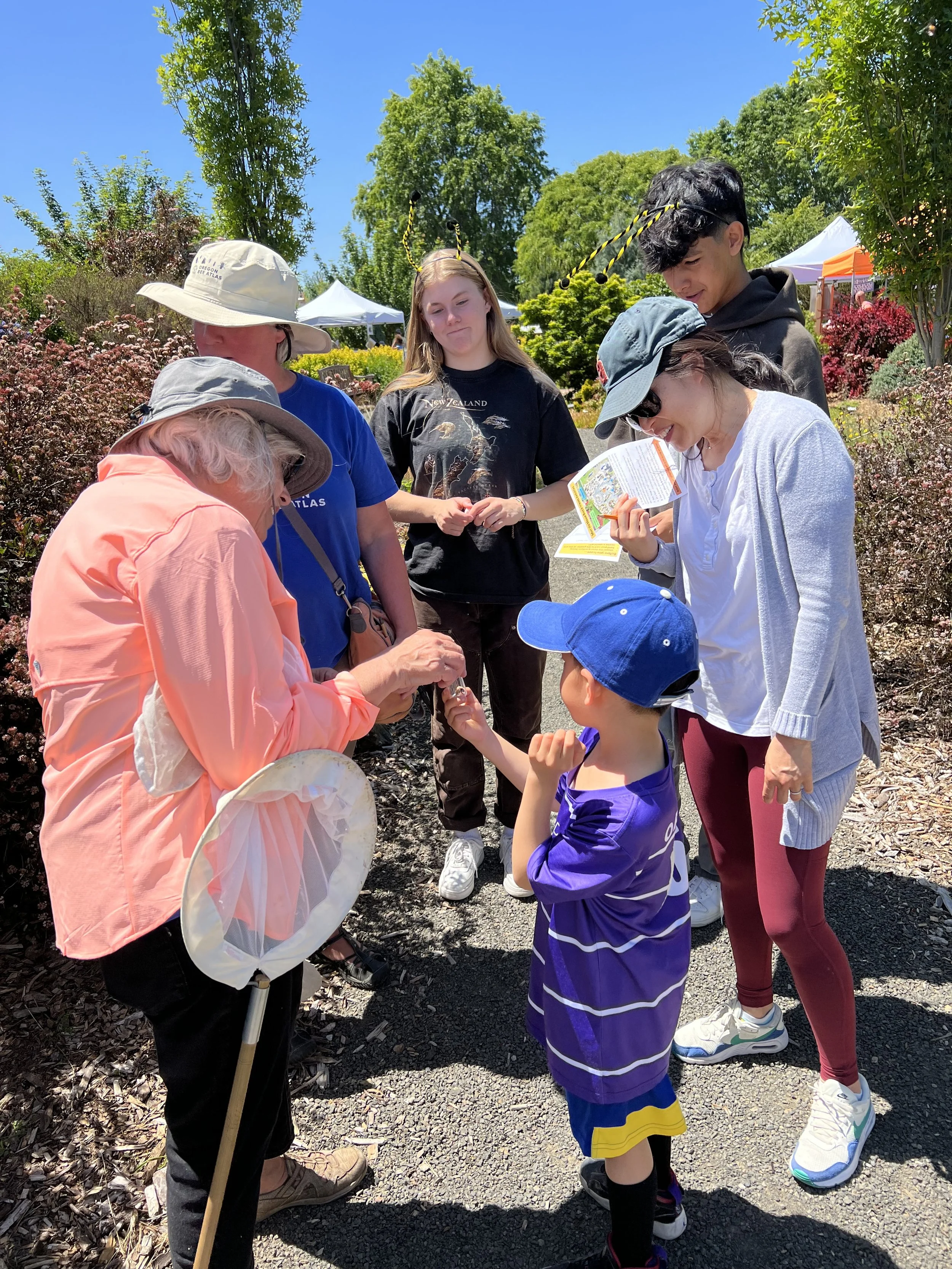

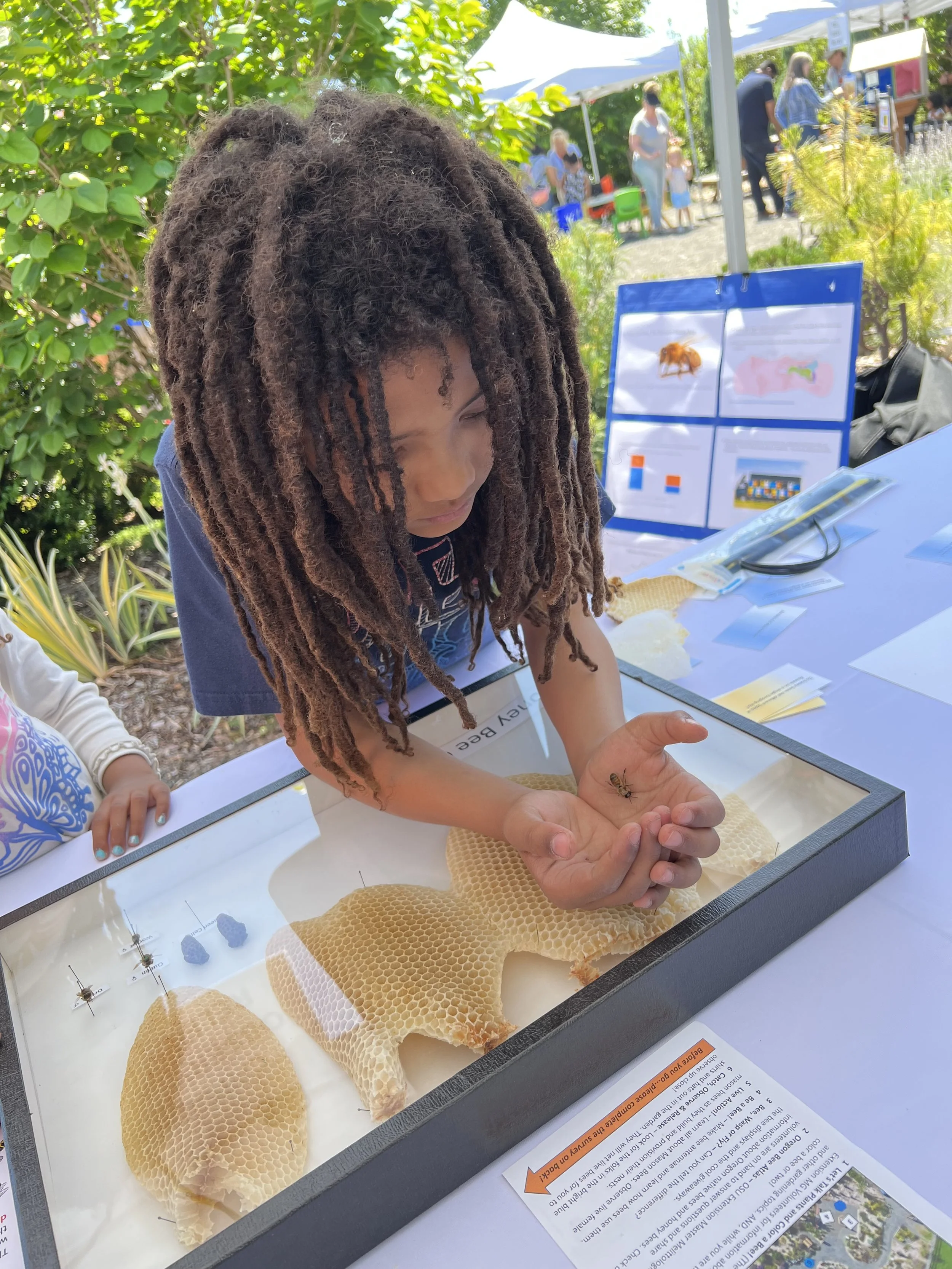


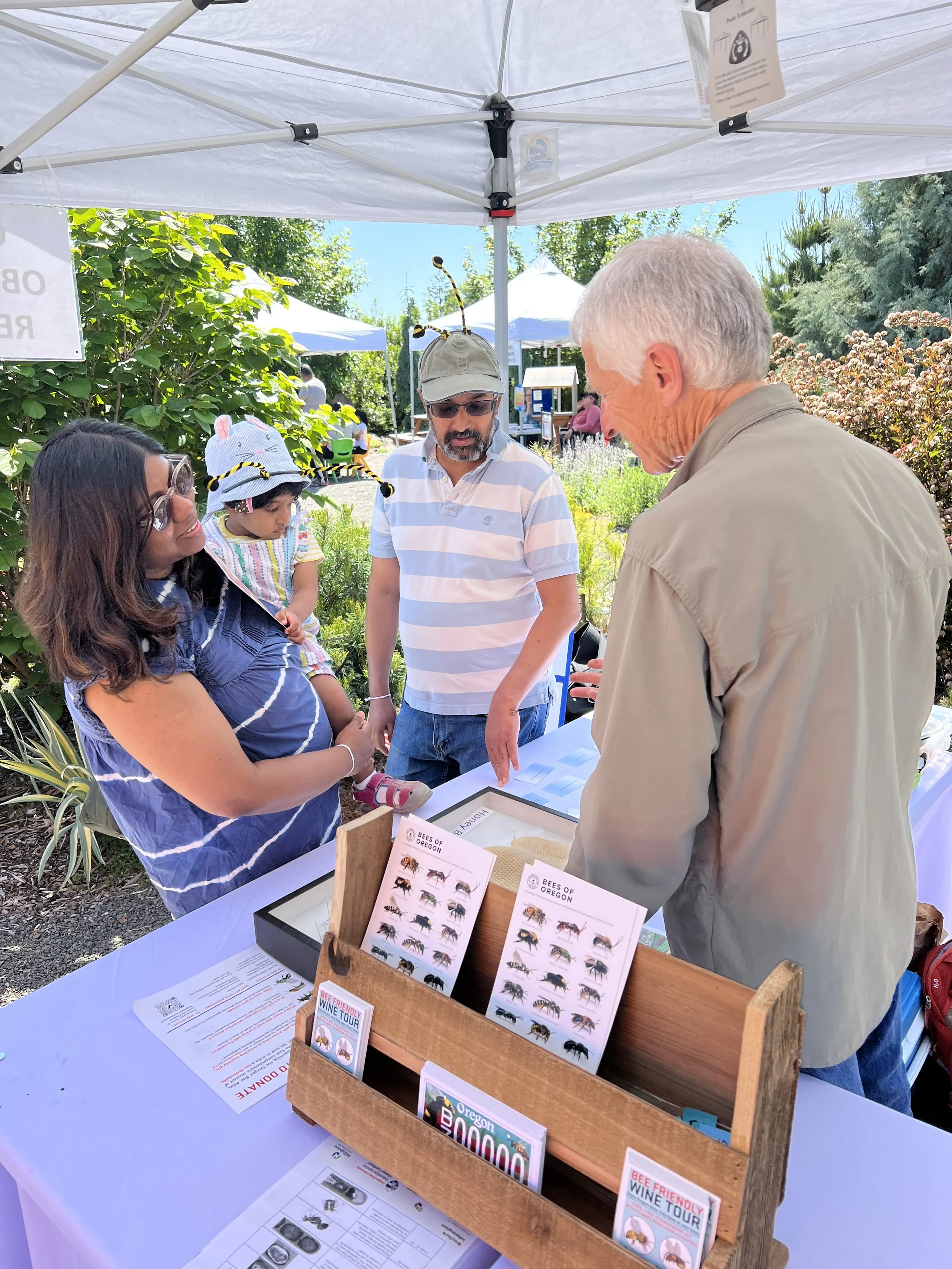


Washington County Master Gardeners delivered another excellent event for families with their “Meet the Mason Bees and Friends” day at the Portland Community College Learning Garden on June 3. Big hits with the crowd included capture and release bee observation and checking out the display of the variety in Oregon native bees, but the fan favorite had to be the male drone petting zoo provided by Mark Gorman. Even though they aren’t native, they do open the door to appreciation of other bees. Thanks, Susan Albright, for a masterful organization job and sharing your great photos.
OBA announcements
Catch a Buzz
Catch a Buzz is the FIRST Tuesday of the month at 7pm. To join, go to https://oregonstate.zoom.us/j/97230252365?pwd=TURyTXNMZ1M5SHl2TFQvajBxemtRdz09 | Password: bees
HOLD THE DATE: OREGON STATE FAIR IS AUGUST 25 TO SEPTEMBER 4
The OBA will have a strong presence at the fair and you are needed to help share our information. Watch for details on signing up to help, but mark your calendars NOW!
have you opted in to be listed in the member directory on the portal?
It is not a requirement to list your contact on the portal, but it sure is useful to fellow members looking to invite you out to collect with them or to share outreach materials or whatever. To opt in, all you have to do is log in, go to the volunteer reporting page, click on the My Profile tab and then click on “Yes” next to the “Opt in?” query towards the top of your profile.
Clark public utilities pollinator festival to feature oba - you can help!
On June 24th Clark Public Utilities will be holding their first Pollinator Festival in Vancouver, WA. Both the OBA and the WA Bee Atlas will be there!. We need people to volunteer at the event. Doug Tallamy will be the keynote speaker and there will be giving tours of the pollinator garden and solar meadow. Many bee groups as well as agencies will be at the event so it will be good time to make connections with other people in this area of interest.
When: June 24 from 10 a.m. to 4 p.m.
From the event website: This family-friendly event will include crafts and activities for children. A demo beehive offers a close-up look at bees. Farmers market booths, seminars with local experts, food trucks and music will add to the fun. Mark your calendar for this lively community celebration of some of the hardest working organisms in the animal kingdom. Dress for the weather and bring your hat, water bottle and some friends!
kudos and thanks are always in season
Thank you to Carol Yamada for creating the pollinator poster that keeps on giving. She recently added new photos to the pollinator garden poster she created for her Lake Oswego garden club, and now the Central Oregon team has, according to her Kudos nominator, “the most gorgeous pollinator poster…that can be shared at OBA and Master Gardener tabling events. This is Carol's own artwork which makes it even more special.”
Another enduring supporter of the OBA, Heike Williams is thanked for “doing the bulk of leading and informing our team the past couple of years...Thanks, Heike, for being a steady leader for our group.”
Small acts mean a lot. Scott Sublette was thanked via Kudo-gram for the loan of a net, and likewise, Shaii Stone was thanked for sticking to her commitment to attend a tabling event despite an injury and some very hot weather.
Debbie Spresser is thanked for coordinating with 2 other OBA members to set up a table at the Earth Day Fair hosted by the Bend Environment Center on April 22, her first time in the lead! And afterwards she right away signed up to take the lead for another event in Bend, the Water-wise Field Day, on June 4.
Leadership like Debbie’s must inspire, because Phil Paterno “helped Debbie to cover the tabling event on Earth Day in Bend in order to "learn the ropes". Then he took all the materials and represented the OBA at the CCOTM Community Garden Party in Prineville on May 13, his first one on his own!”
And finally, in the recognition of great skill, a nominator calls out Martha Richards’ extreme netting talents, showcasing her “Fastest small net, getting two Xylocopa (male and female) in one swift and accurate swoop…”
Do you know someone else who deserves a big thank you for the work they do on behalf of OBA and its volunteers or just deserves a shout-out for their achievements, big or small? You can make that happen! Nominate your personal hero for going above and beyond and after approval by the Advisory Committee, a handwritten note will be sent thanking your special person. All it takes to get the process started is to fill out the nomination form found by clicking HERE.
Calendar
There are loads of collecting opportunities on the calendar already, plus Bee School in August and campouts, too. Plan your collecting season now!
Team news
If you want to include your own team’s news in the Roundup, send it to Ellen Silva (e.silva@comcast.net) the Monday before we publish (typically, the 1st and 3d Monday of the month).
Linearleaf Phacelia (Phacelia linearis)- C. Yamada
What’s blooming
Combing through iNaturalist over the last week, we note our volunteers have come across some great plants on the hit list or have found bees in areas of special interest. You should be able to revisit these sites. Remember to check the permit requirements for these sites in Canvas.
Mountain Blue Penstemon (Penstemon laetus)
- Katharina Davitt- Klamath County, OR (June 13)
Rock Buckwheat (Eriogonum sphaerocephalum) - Rick Williams - Harney County, OR (June 13
Checkerblooms (Genus Sidalcea) - Pam Hayes - Washington County (June 12)
Please remember to include images of the flower, the leaves, and the entire plant with all your submissions. Only include images of the plants you collect on, not bees, in the Oregon Bee Atlas (Plant Images/Sample ID) project.
miscellany (not to be missed)
Catch A Buzz: june6,2023 Summary submitted by the brilliant Martha Richards
Disclaimer: This summary is not going to do justice to Steve Gomes' amazing presentation, so if you are at all interested in the topic of rearing bumblebees, watch the recording of Catch a Buzz (it will be posted to Canvas). It's fascinating. Also, Steve said that he would follow up with pictures and references, so stay tuned as those resources will find their way to the Roundup .
Upcoming events: June is a busy month for field trainings; pay attention to the calendar in Canvas. Also, if you're planning a bee outing and want to invite others to join you, be sure to post that to Canvas (for information about how to do that, check the FAQs page in Canvas).
Field Trainings (Please RSVP!)
Sunday June 11th: Sisters
Friday June 16th : Mt. Emily (near La Grande)
Sunday June 18th: Penticon, B.C. (to coincide with the B.C. Native Bee School)
June 23-25: campout at Hells Canyon
Thursday June 29th : Stoller Family Estate Vineyard
Outreach opportunities: Pay attention to your email inbox because Jen frequently sends outreach opportunities. The Oregon State Fair is one fabulous opportunity, as volunteering comes with free admission to the fair. Not only that, but Steve Gomes has been staffing the bee booth for the entirety of the fair (10 days long!) for a number of years, so if you want to spend a day peppering him with questions (in between answering questions from the general public, of course), this is your opportunity to do so. Jen will send out the outreach request when the time comes.
Raising Bumblebees, presented by Steve Gomes
Steve is active in both the Master Beekeeper and Master Melittologist programs; he achieved the Master level certification of the beekeepers program last year and is currently working on his Journey level certification for the melittologist program.
The greenhouse industry relies heavily on (cultivated) bumblebees to pollinate many of their crops, tomatoes being among the most important because they require "buzz" pollination (where the flower only releases its pollen when it's vibrated at a certain frequency -- bumblebees vibrate but honeybees don't). These cultivated bumblebees are a potential vector for disease, as the bumblebees are not necessarily locally-grown, meaning that they can be shipped farther than a bee might naturally fly. More concerning is that one study found that over 70% of the bumblebees they examined carried some sort of disease. When those cultivated bees escape from the greenhouse (as some inevitably do), there is a high risk of transmitting their diseases to local native bumblebee populations. Oregon prohibits the import of non-native bumblebees, which reduces the risk of non-native bees establishing a foothold here (we're looking at you, Bombus impatiens). That said, native species that were cultivated elsewhere can be imported, along with any diseases that might be hitching a ride. There is a local need for cultivated bumblebees for research and agriculture, and Steve recently became interested in learning how to cultivate bumblebees.
Must-Read: Owen, Robin. Rearing Bumble Bees for Research and Profit: Practical and Ethical Considerations.
(Citation coming with Steve's notes...or look it up on the internet).
Steve started the process by collecting queens in the early spring, shortly after they emerged from hibernation but before they started a nest. He looked for bees engaged in a seeking behavior, zig-zagging around just above the ground level (they're looking for a suitable nest site) and made sure that they weren't carrying pollen, as that would mean that they have already established a nest and are foraging to feed their offspring. He used Bombus melanopygus and B. vosnesenskii because they are abundant in his area. He built individual nesting boxes and kept them well-provisioned with ample fresh pollen and nectar, replenishing the supplies every three days. Multiple nesting boxes were placed in larger plastic boxes whose climate was carefully controlled in terms of heat and humidity. The most important things to provide were an abundance of pollen (Steve collected it from his honeybee colonies but he said that there are fresh-frozen pollen products available; the key is that the pollen must be fresh); nectar (his nectar solution was thinner than what beekeepers provide for honeybees because the bumblebees don't have access to plain water); and a place to lay eggs (he dipped his pollen balls in beeswax, so after the queen polished off the pollen she could lay eggs in the empty wax cup). He found that about 25% of the bees he captured successfully laid eggs and raised some young. Things went well until the fourth week when, for some unknown reason, the bees started dying off. Steve is looking into why that happened. Again, this is a very brief summary of Steve's presentation, which included photographs of his nesting boxes, feeding systems, and pollen balls; and videos of the bees in the boxes. When the recording is available on Canvas, it's a definite must-watch.
When the floor opened for questions, a number of people asked about how Steve relocates bumblebee nests. He relocates bumblebee nests on request, usually when the nest is located where people are getting stung or sometimes when the nest is about to be disturbed by construction or remodeling. If the nest is in a bird box, he makes sure that there is only one entrance/exit and then waits until after dusk when all of the bees have returned to the nest. Then he plugs the entrance with steel wool and moves the bird box very gently to a new location (usually not far from the original spot), secures the box, and removes the steel wool.
When a nest is in the ground, he uses a special bee vacuum that he modified to gently vacuum up the guards and aggressive bees of the colony. After they're taken care of (the vacuum doesn't harm them, and he cools them to slow them down and make them calmer), he digs up the rest of the nest, collects the rest of the bees, and gently moves it to a new spot. The key to moving any bumblebee nest is to keep the queen in good condition, and make sure she travels with the nest.
Finding fracta (not) [, Calliopsis (Rozen, 1952)]
submitted to a grateful editor by David Kollen
Sometimes (not often), I imagine Linc as a "mad scientist", looking up from his microscope with a mischievous grin. He has thought of a new victim, what their quarry will be, and is thinking about their upcoming travails.
I don't remember exactly where we were when Linc told me about the Eriodictyon bee, but I do remember it was at last year’s Herb Pharm Pollinator Conservation Day. I can remember parts of his siren song: “Dave . . . Yerba-Santa bee . . . never been collected in Oregon . . .”
And, I can definitely remember my first time looking for the target. I was baking in the sunny Klamath Mountains, enjoying a serpentine-dominated view with a mass of California Yerba Santa (Eriodictyon californicum) in the foreground. It seemed a likely spot to find my bee, so I walked back to my 4Runner and grabbed a net.
As I stood near a Yerba Santa plant, swatting away the occasional biting fly, I remembered pictures of the bee on Discover Life. They seemed distinctive enough, and I had hastily committed them to memory. It wasn’t long before the Apoidean gods granted me a gift, actually three gifts!
Some of you might be wondering: “Why haven’t I heard about a new Calliopsis record in Oregon?” Well, mental images can be blurry, whether the cause is old age, too much Cabernet, or both. Believe it or not, it turns out there is more than one bee that's somewhat smaller than a honey bee with a dark abdomen and light-colored stripes. Who would’ve guessed?
What’s the moral of this story? I think maybe there are a couple of them. First, as Odysseus famously knew, beware siren songs! Second, if you think you might have defied the odds and collected something new, don’t place a bet on it. (Editor’s note: Third, beware taxonomists with sly grins.)
Anthophora californica (c)Peter Bryant
Calliopsis fracta (c)Hartmut Wisch
Carol Yamada was in the news again for sharing her knowledge of bees via the Luscher Farms pollinator garden designed and maintained by the Lake Grove Garden Club of which Carol is a driving force. The article promotes their June 24 pollinator celebration. Learn more about that event HERE. (Yes, Carol knows the sign is upside down; this was the unboxing of her work of art in preparation for installing it.)
Ground Nesting Bee Project - an easy add to your iNat work for the Atlas
Bryan Danforth (you’ll recognize that name as one of the authors of The Solitary Bee) asks that we join in an effort to better understand the needs of ground-nesting bees. In Brian’s words:
Dear Pollinator Enthusiasts,
Our lab has recently initiated a community science project focused on mapping (and ultimately conserving) aggregations of ground-nesting bees using the iNaturalist platform. We are calling this “Project GNBee” and we would like to spread the word among colleagues and prospective partners. Here are some links to give you more background on the project:
GNBee website iNaturalist project
Would you please spread the word? We would also be interested in your thoughts on the project and how we can improve and expand it. The project will help us understand how factors like topography and soil characteristics impact the locations of nesting aggregations and may allow us to create suitable nesting habitat in the future. We also hope that the project will lead to conservation efforts focused on protecting sites that host large aggregations of ground-nesting, wild bees.
For further inquiries and suggestions please contact the project lead, Jordan Kueneman, at groundnestingbees@gmail.com.
Thanks for your help and feedback, Bryan Danforth
Donating to the oba is always in season
Do you really want another tie (can’t really wear them in the field when you’re collecting bees) or flower arrangement (unless it comes with bees, I’m not interested)? Why not suggest to your kids/nieces/nephews that instead of Mother’s/Father’s day gifts or for spring birthdays, they give a donation in your name to the Jerry and Judity Paul Native Pollinator Endowment and help fund the future of the OBA!
Share these instructions: Start by clicking HERE and in the “I want to give to…” field, start typing “Jerry & Judith Paul Native Pollinator Endowment” and it should pop right up. Be sure to select this exact destination for your funds to get it in the right place. And thank you in advance!
For Sale to Good Home - Good Microscopes from a Good Guy
Jerry Paul has a couple of microscopes he is looking to interested in re-homing. Maybe that home is yours? Per Jerry:
With Bee school coming up I thought a student or two might be looking for a microscope.
I have two available and the two attachments give a pretty good idea what they are.
The compact scope in its carrying case was one I used I used while camping. Compact battery-operated lights. The second one will fill all the students needs into the future.
See all the details for SCOPE 1 HERE and for SCOPE 2 HERE. Email Jerry by clicking HERE.
Good advice from great melittologists
After you look at a thousand bees, some of the traits that were
impossible in the first hundred bees become easy. Some don't, but give it another thousand bees!
Header photo: Carol Yamada
Meet the Mason Bees photos: Susan Albright
Incredible Edibles photos: Rachel Phariss
